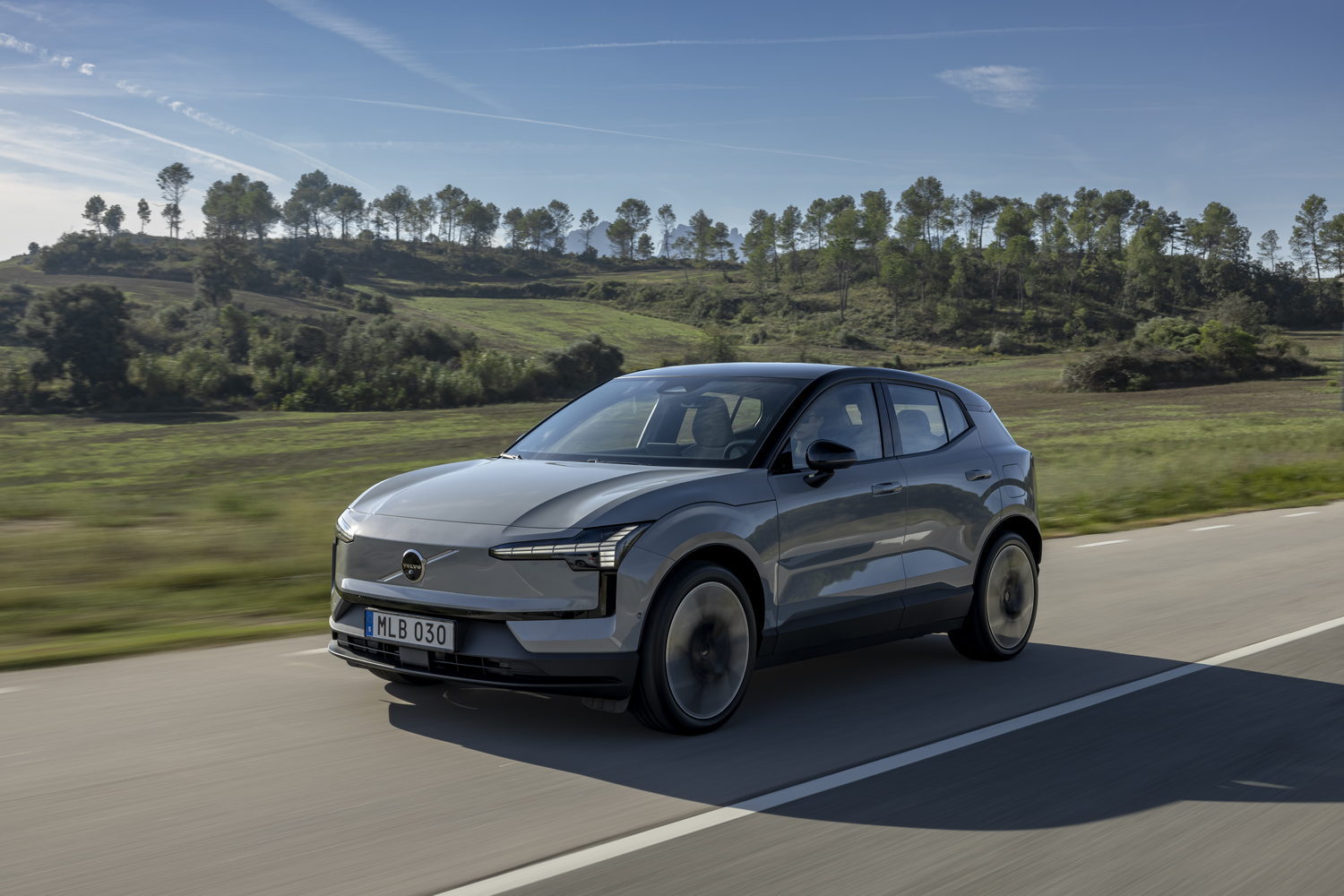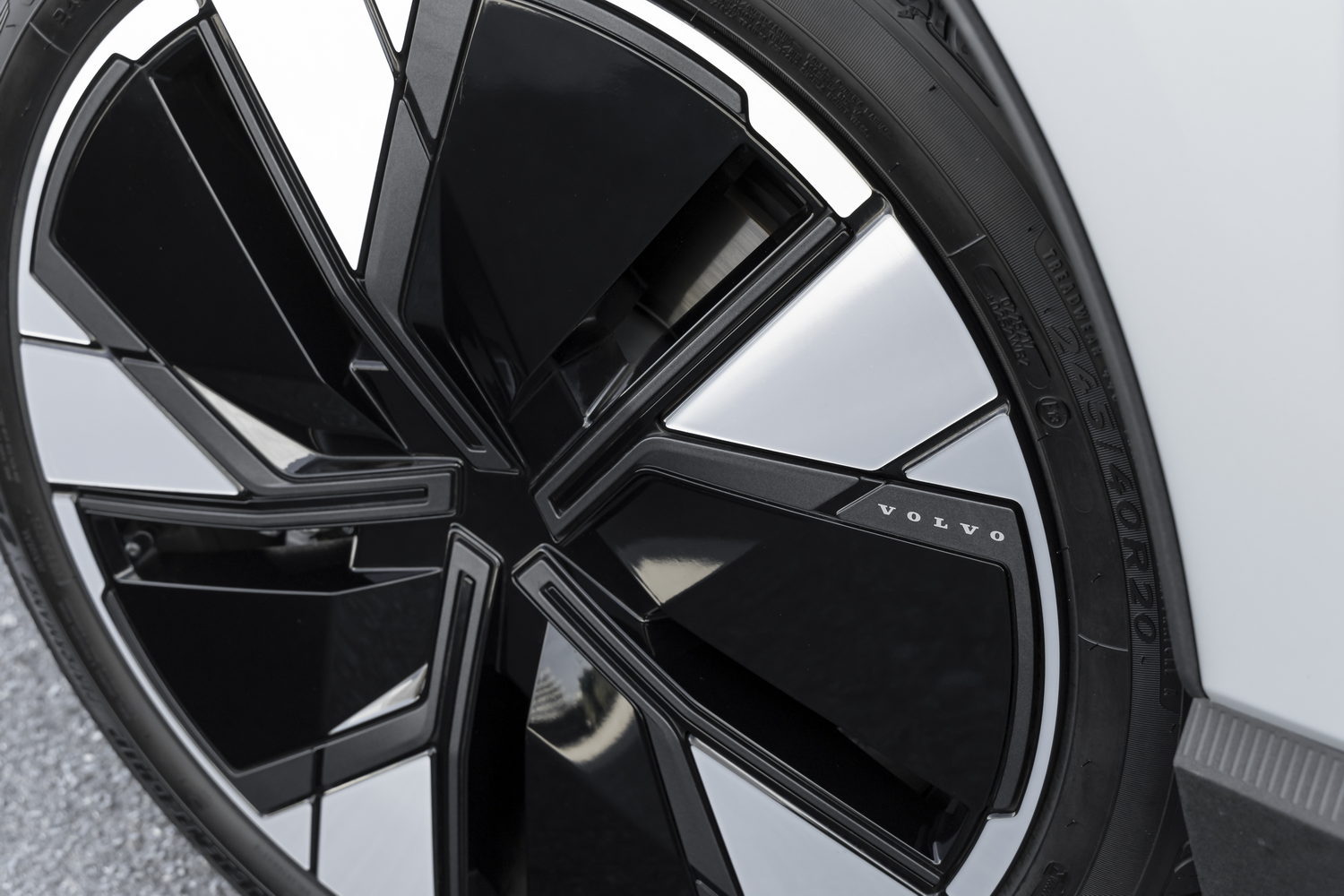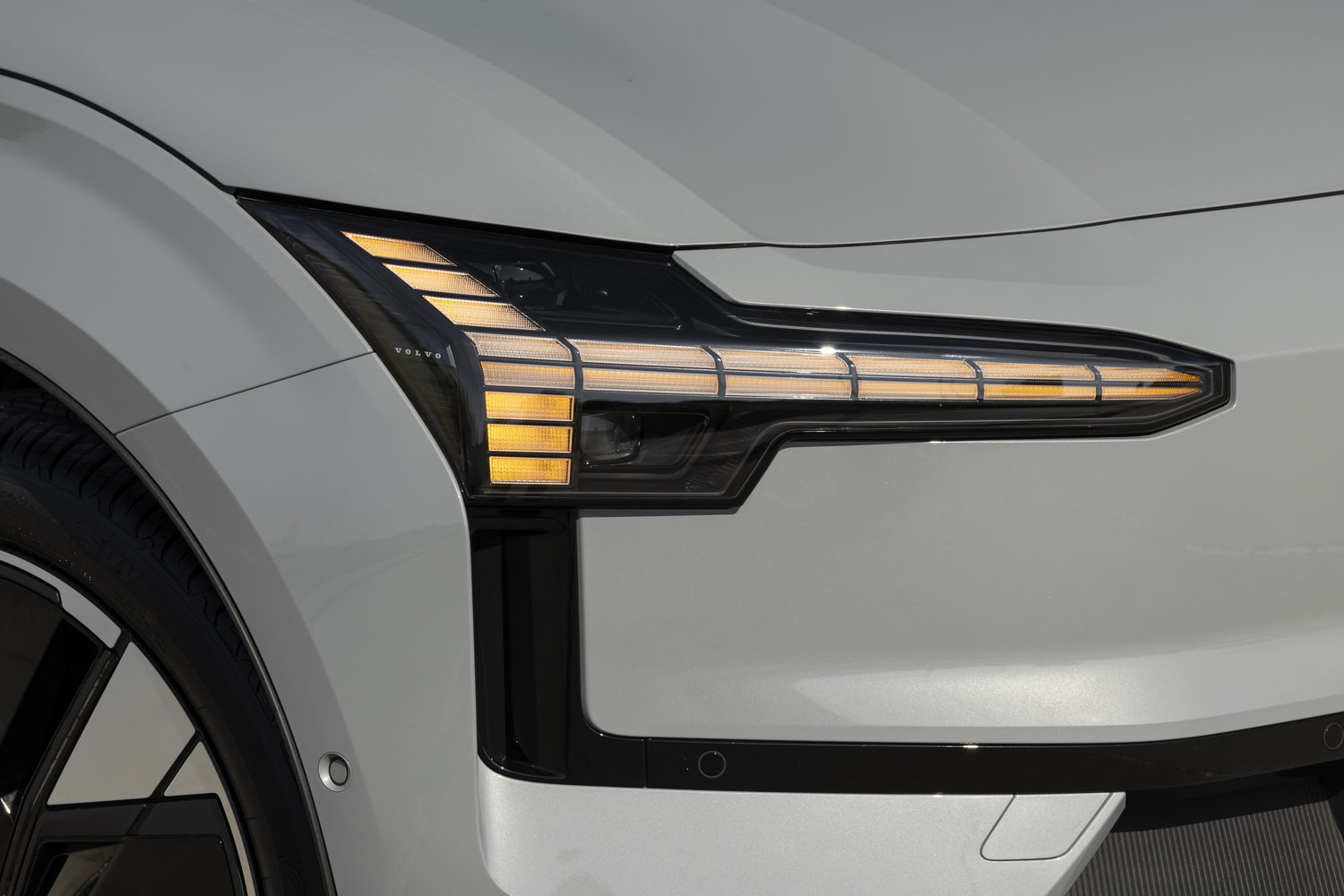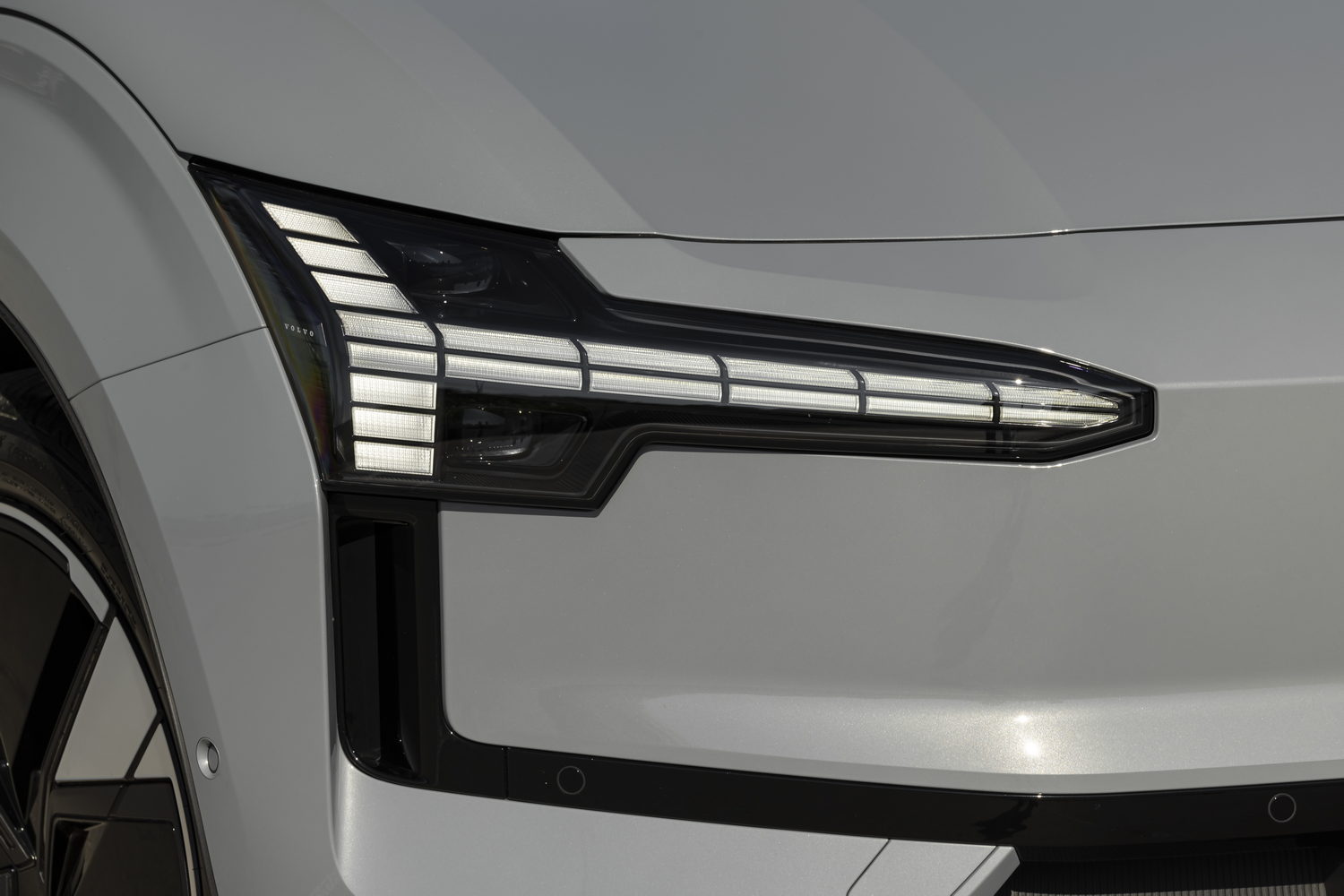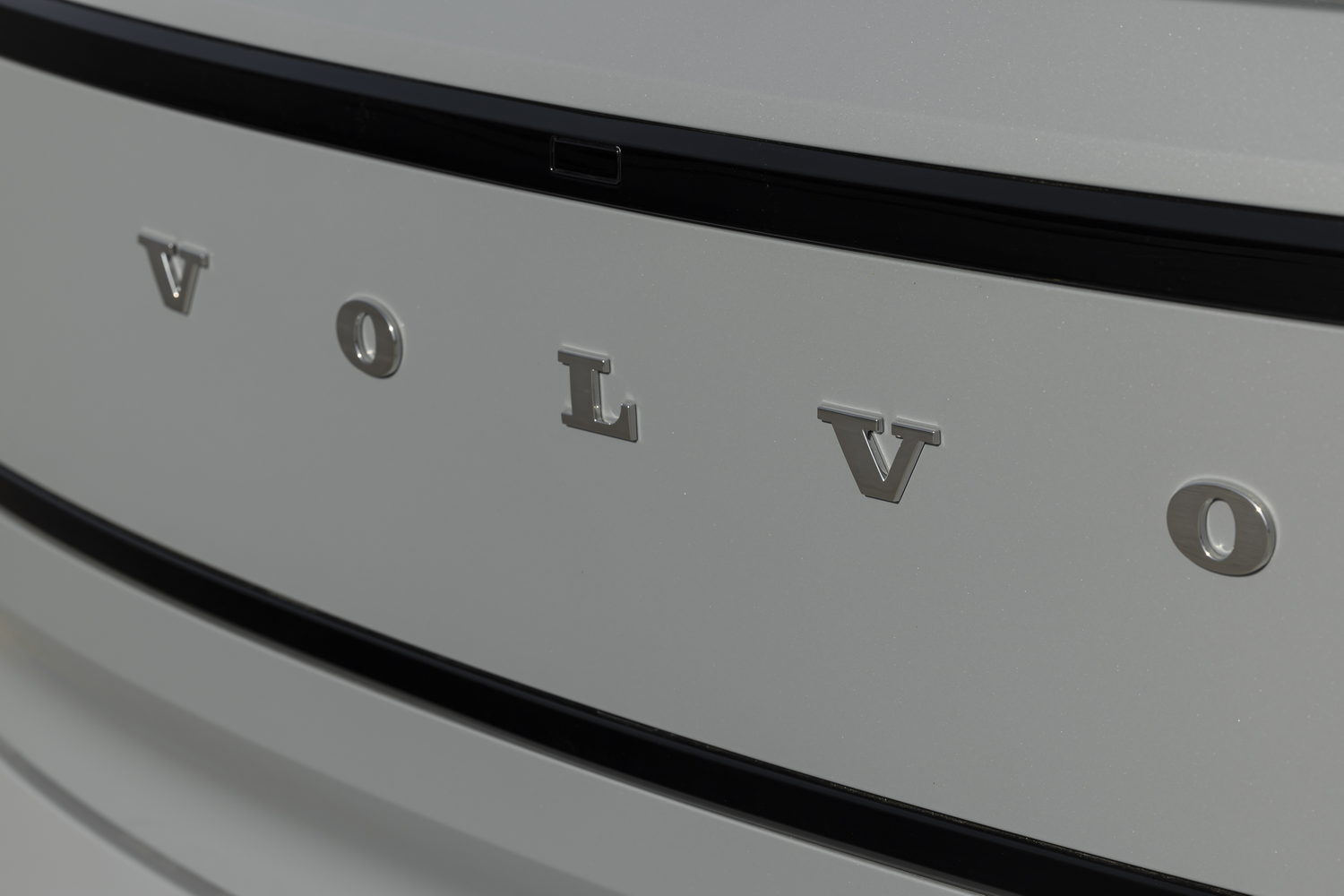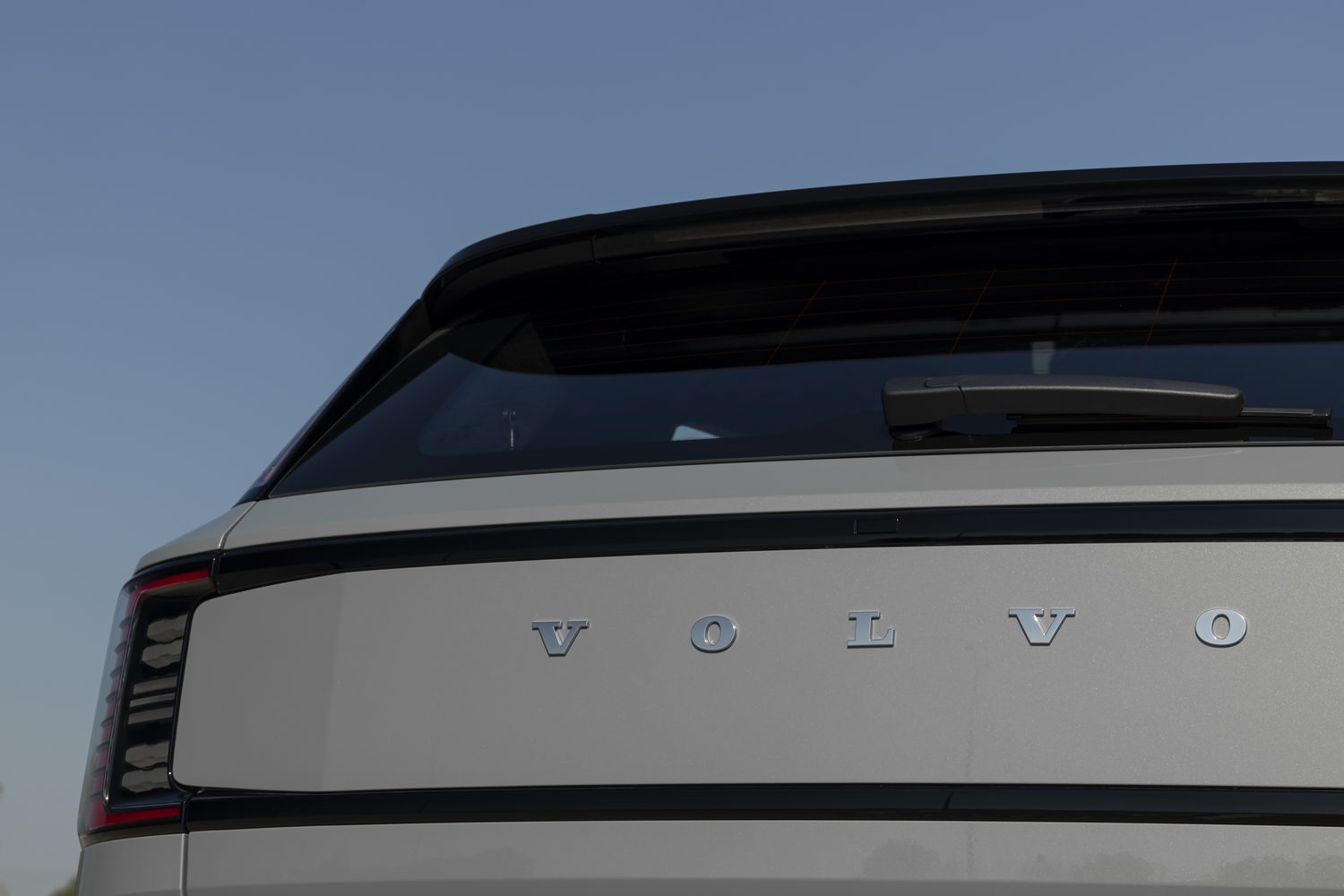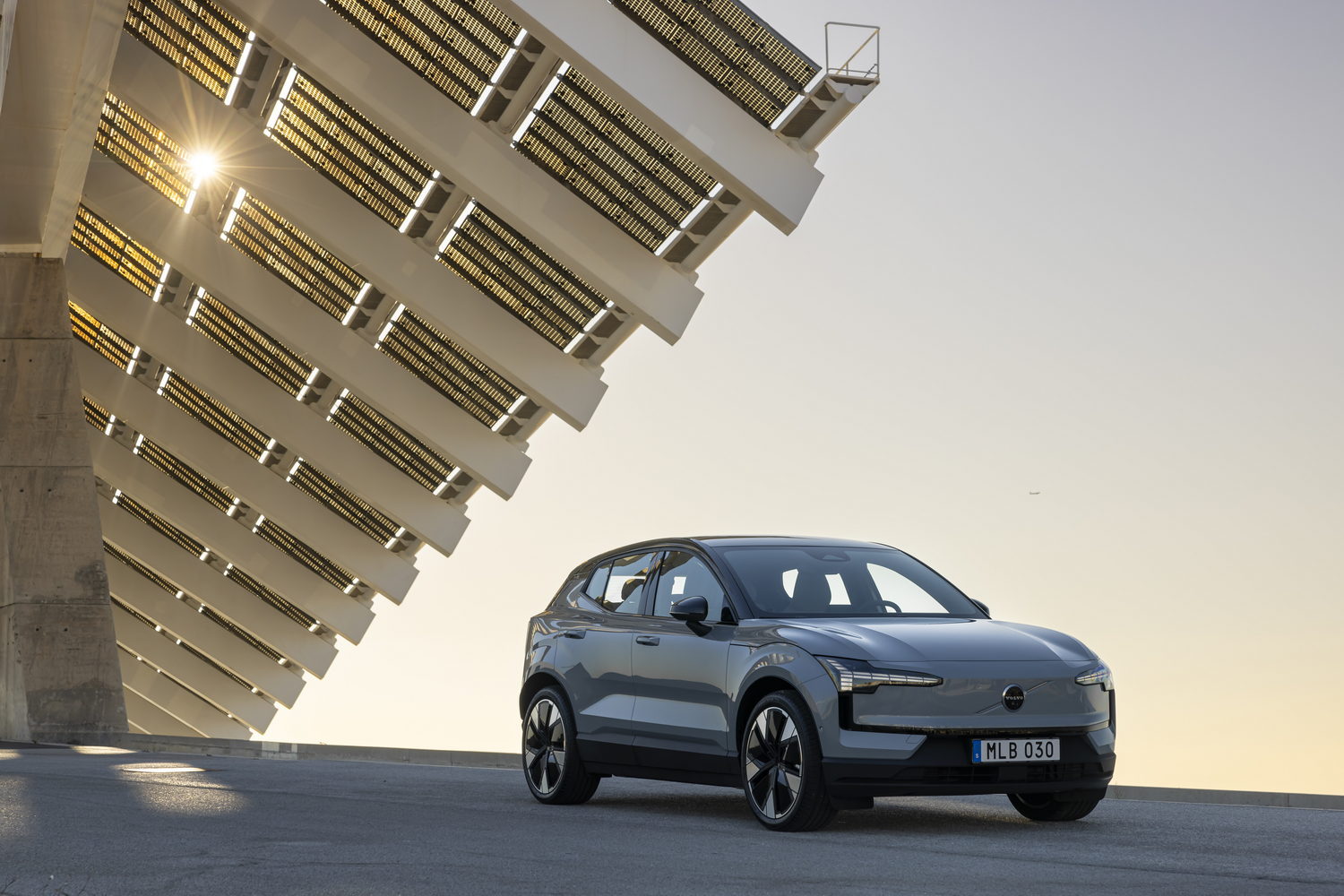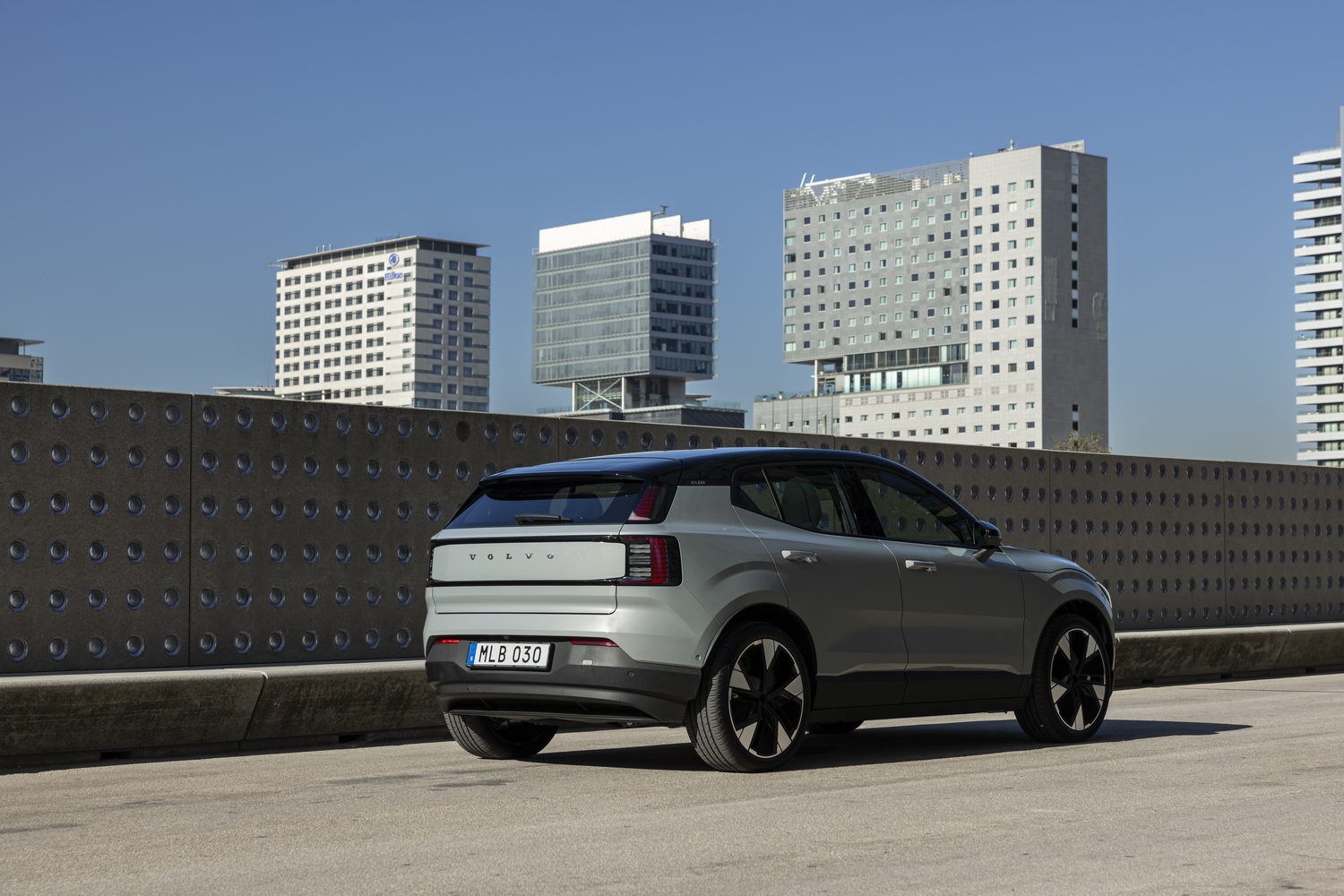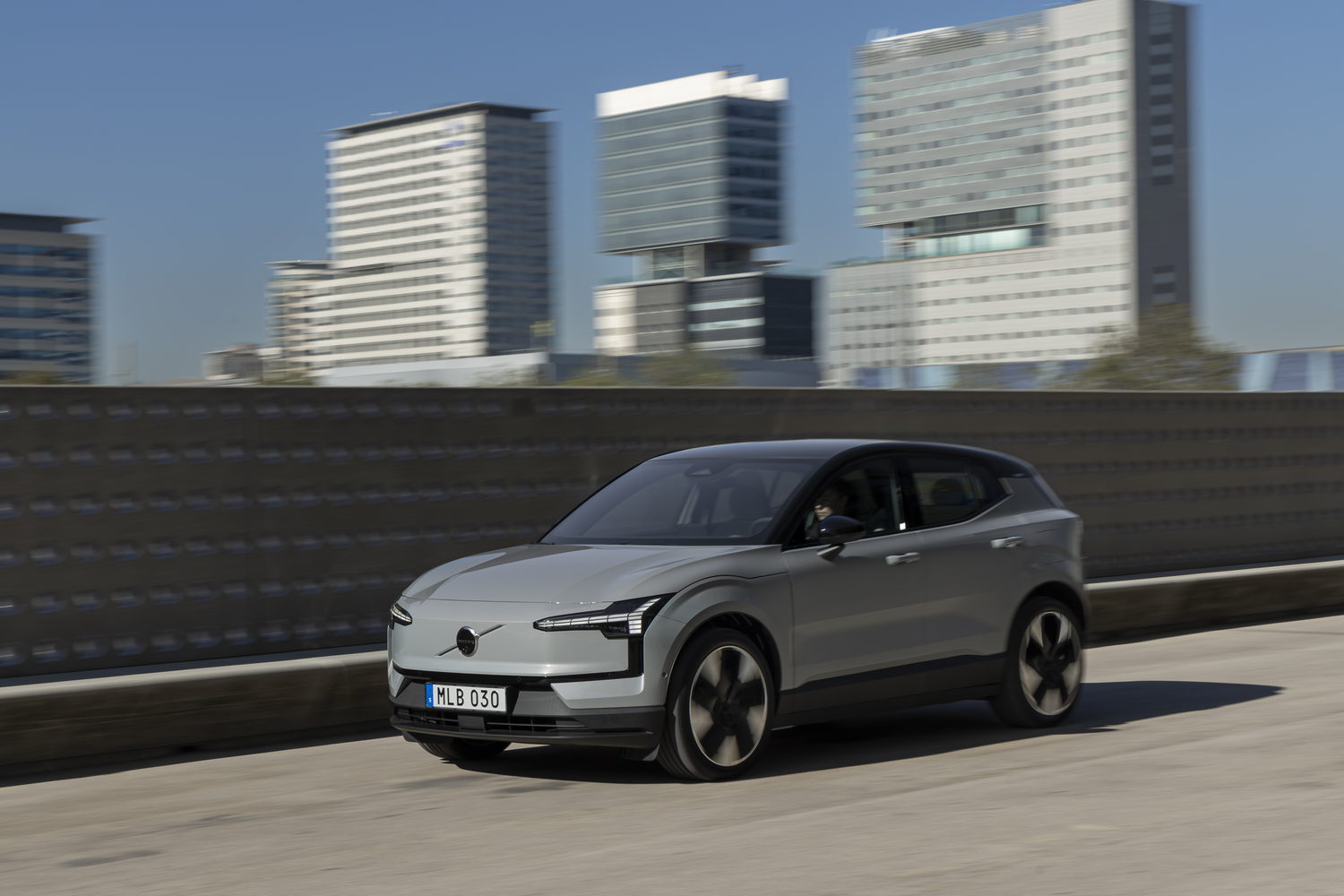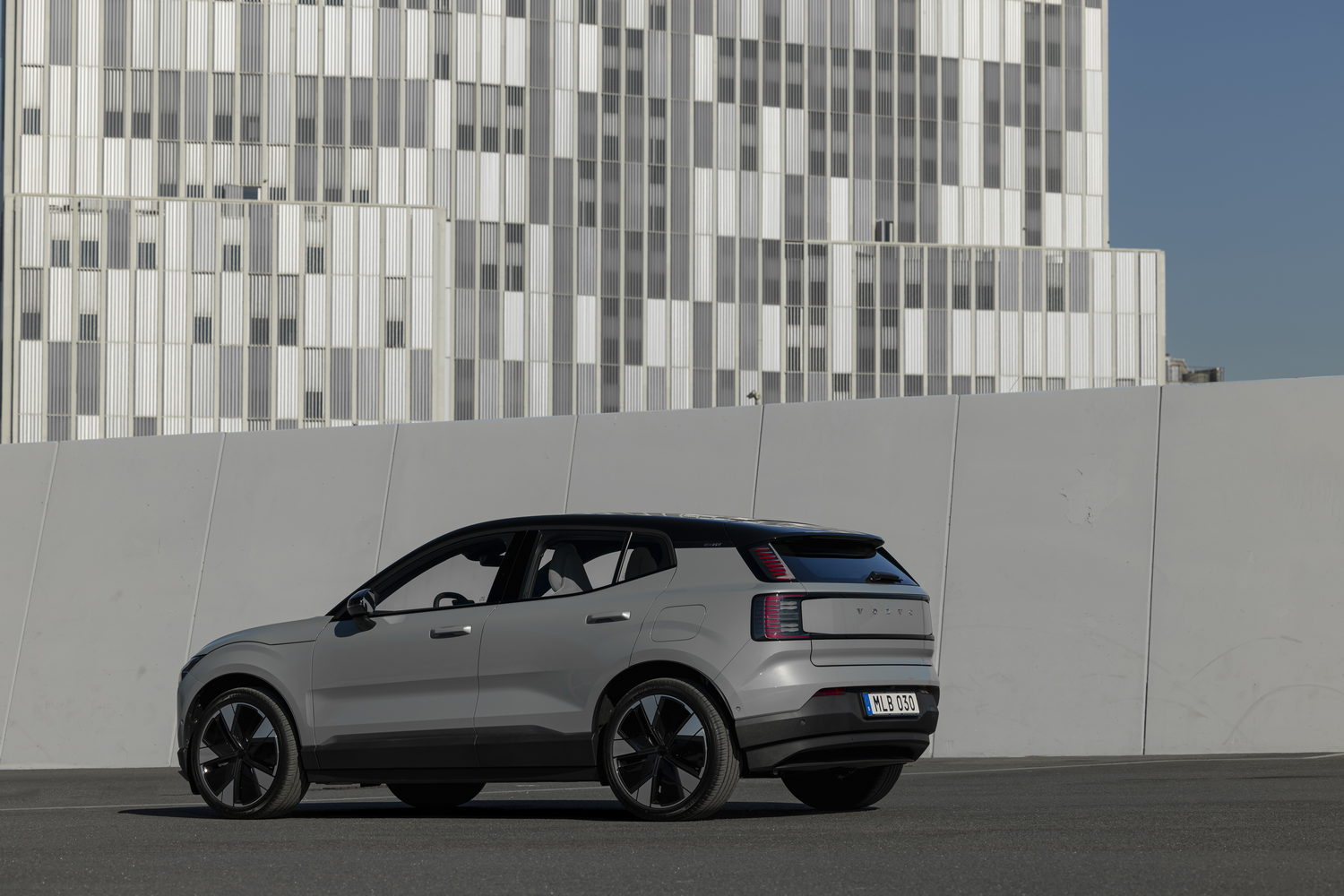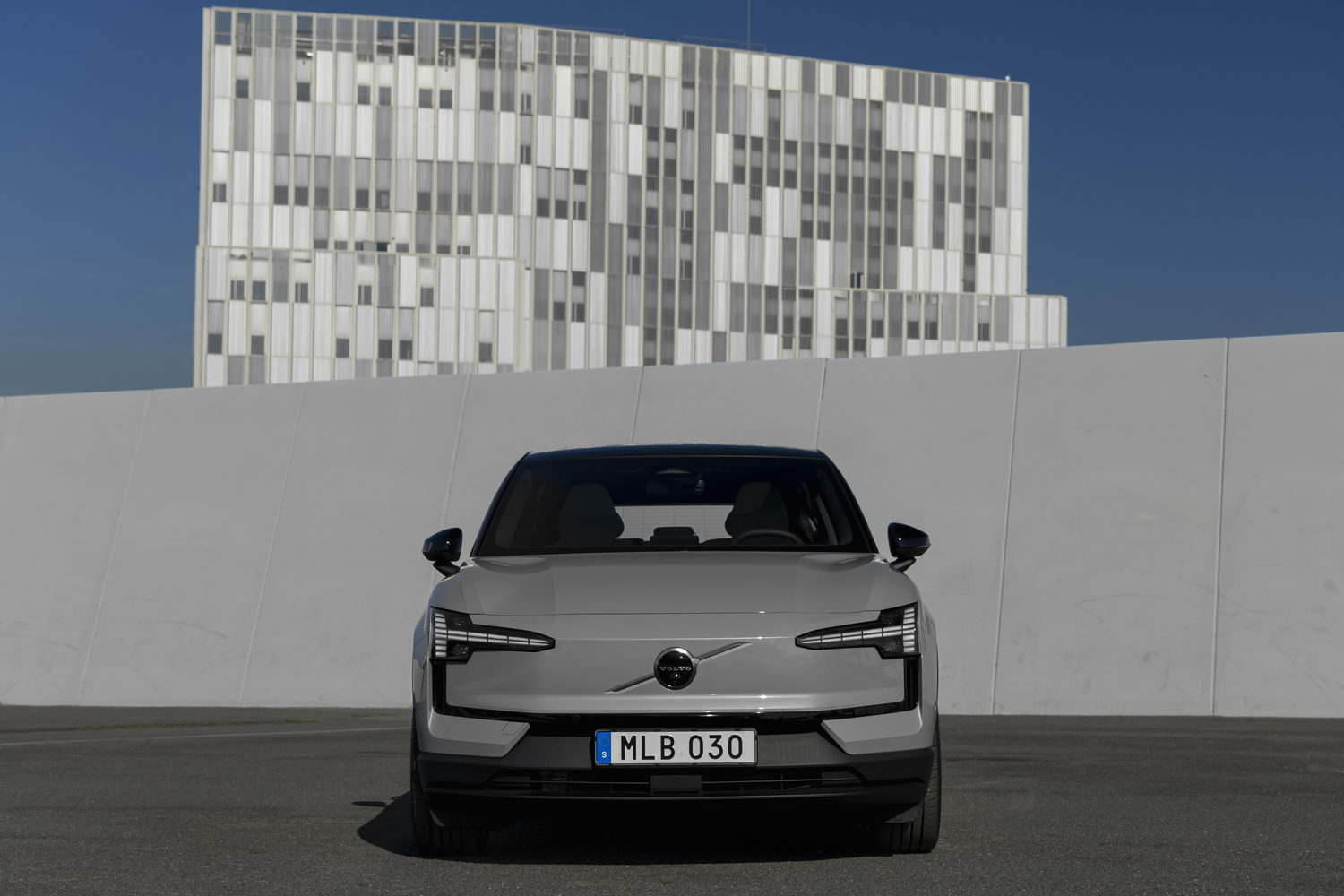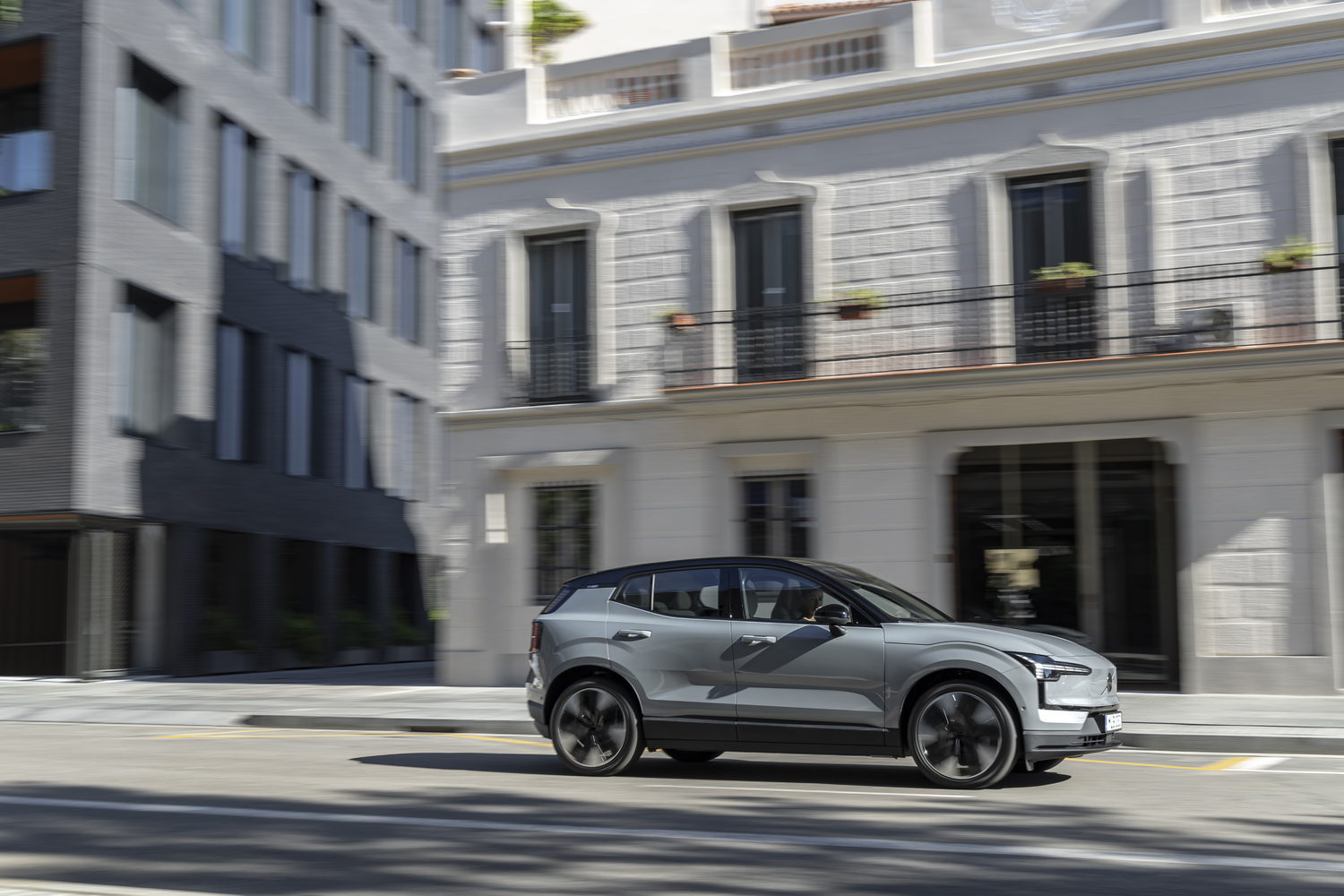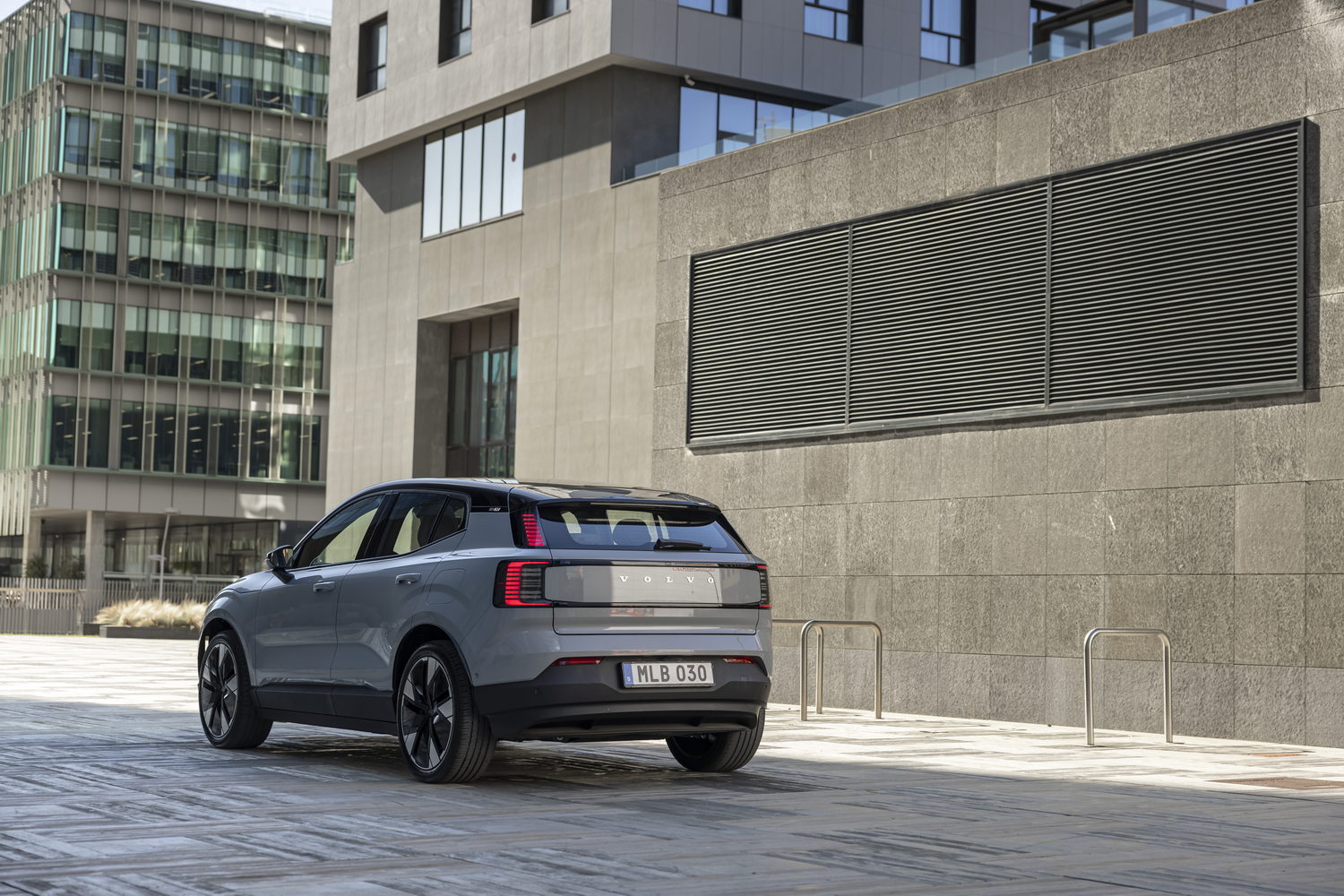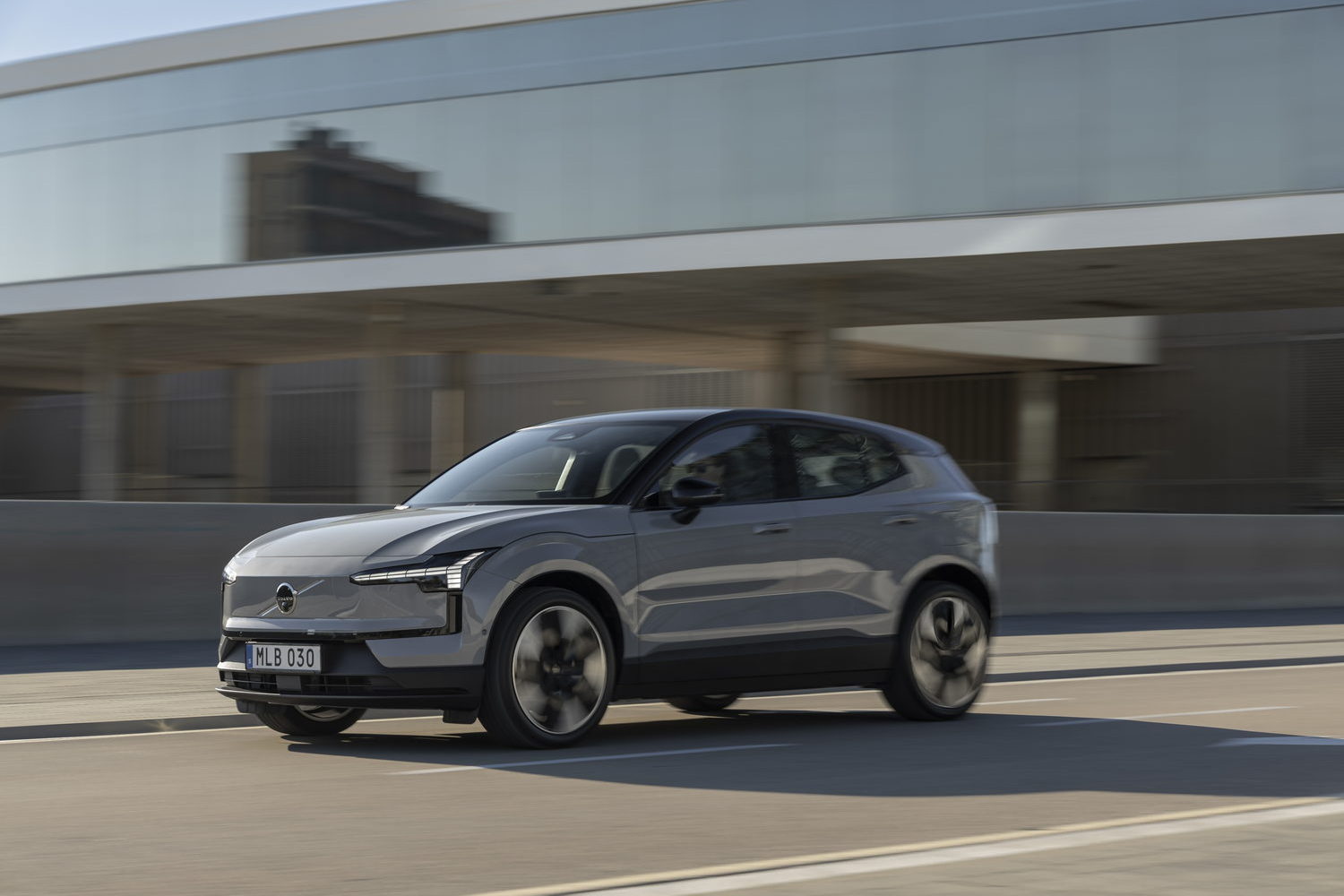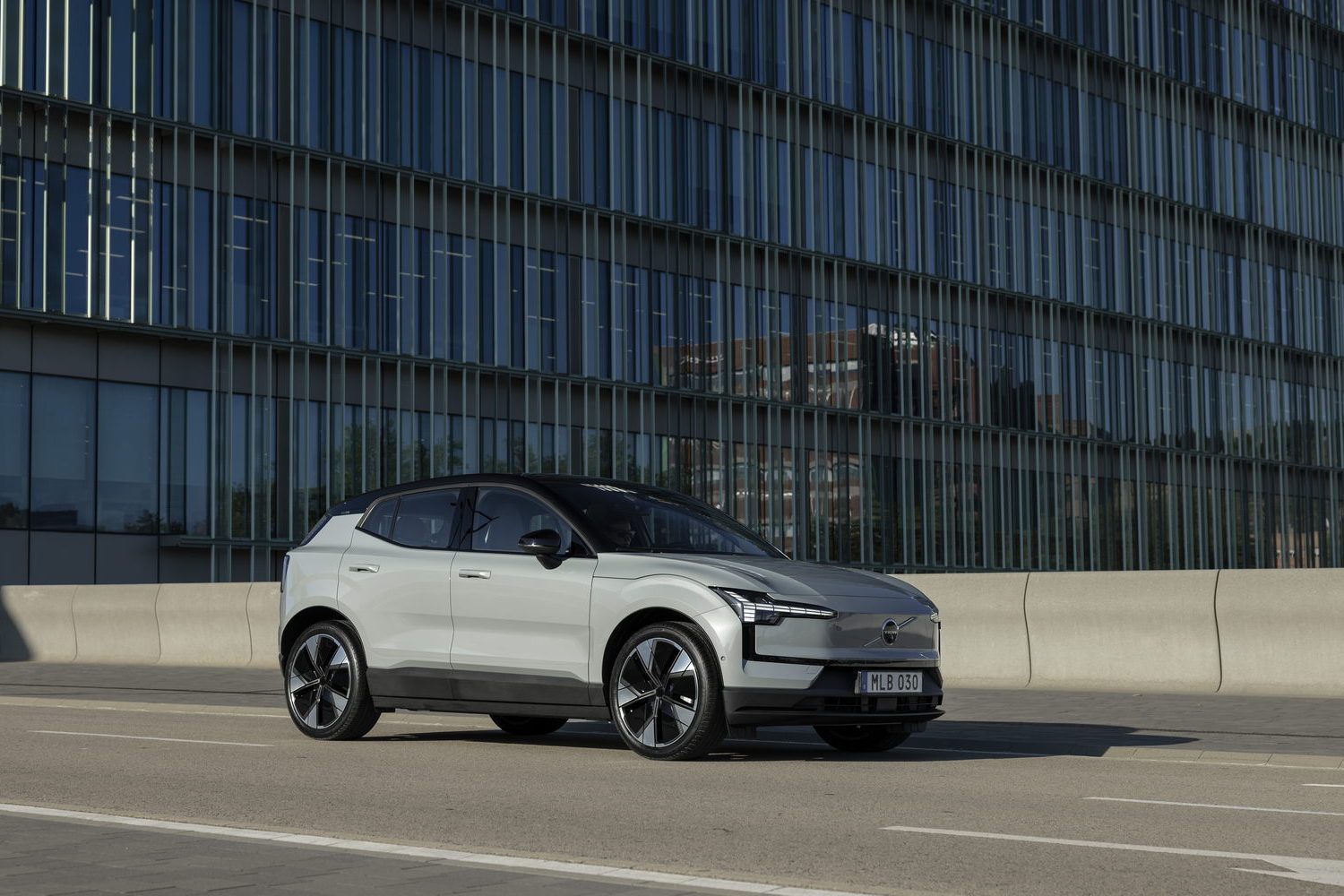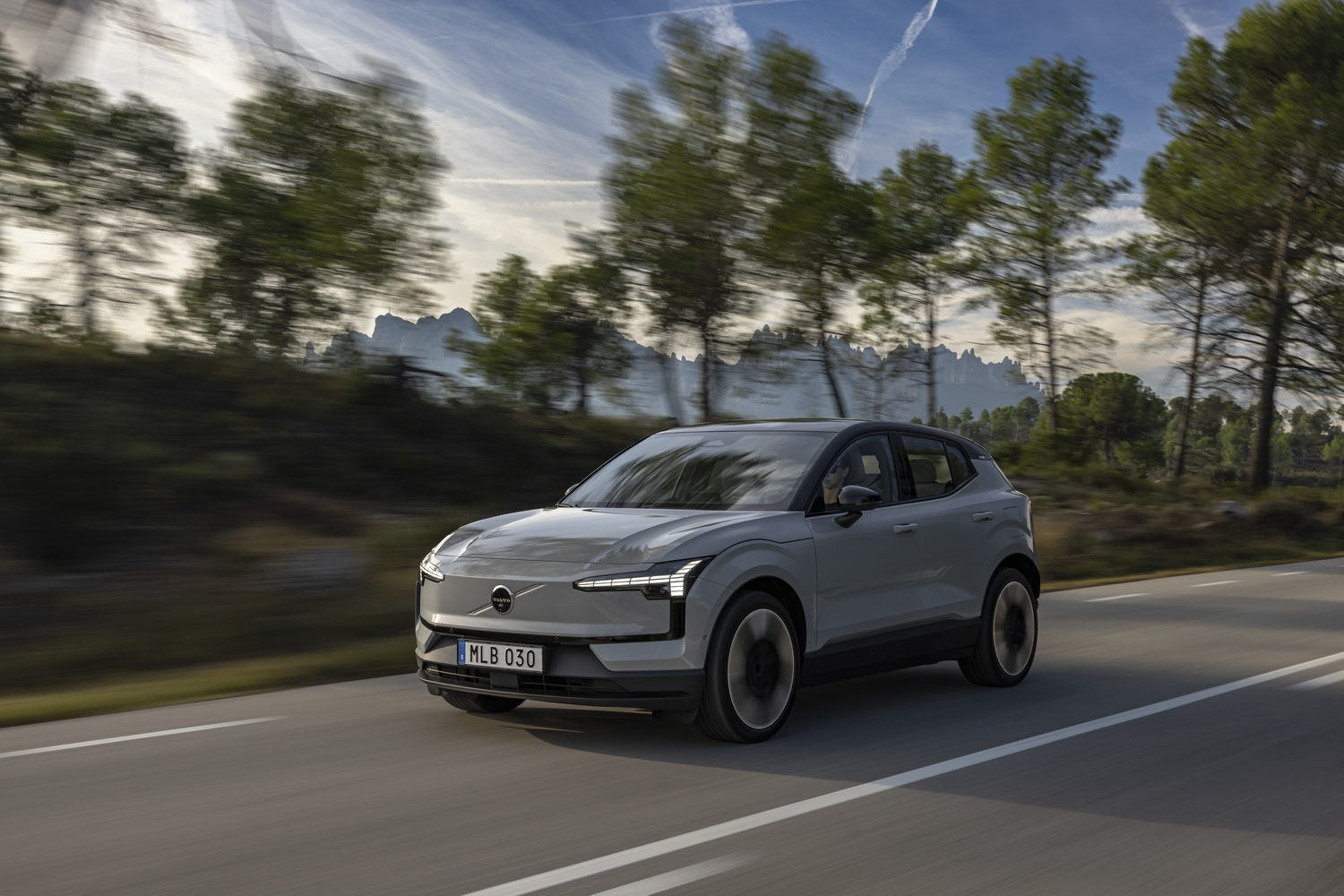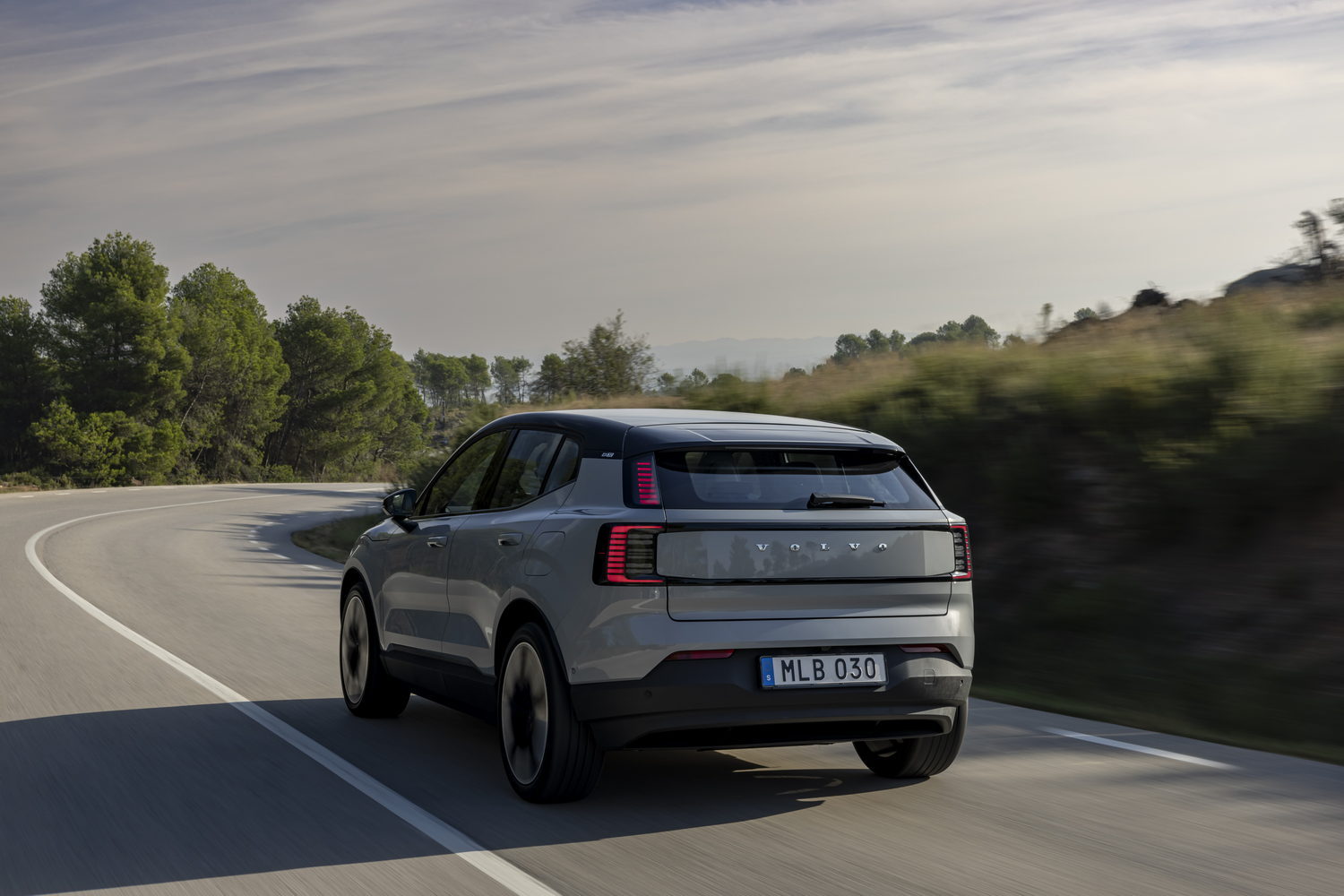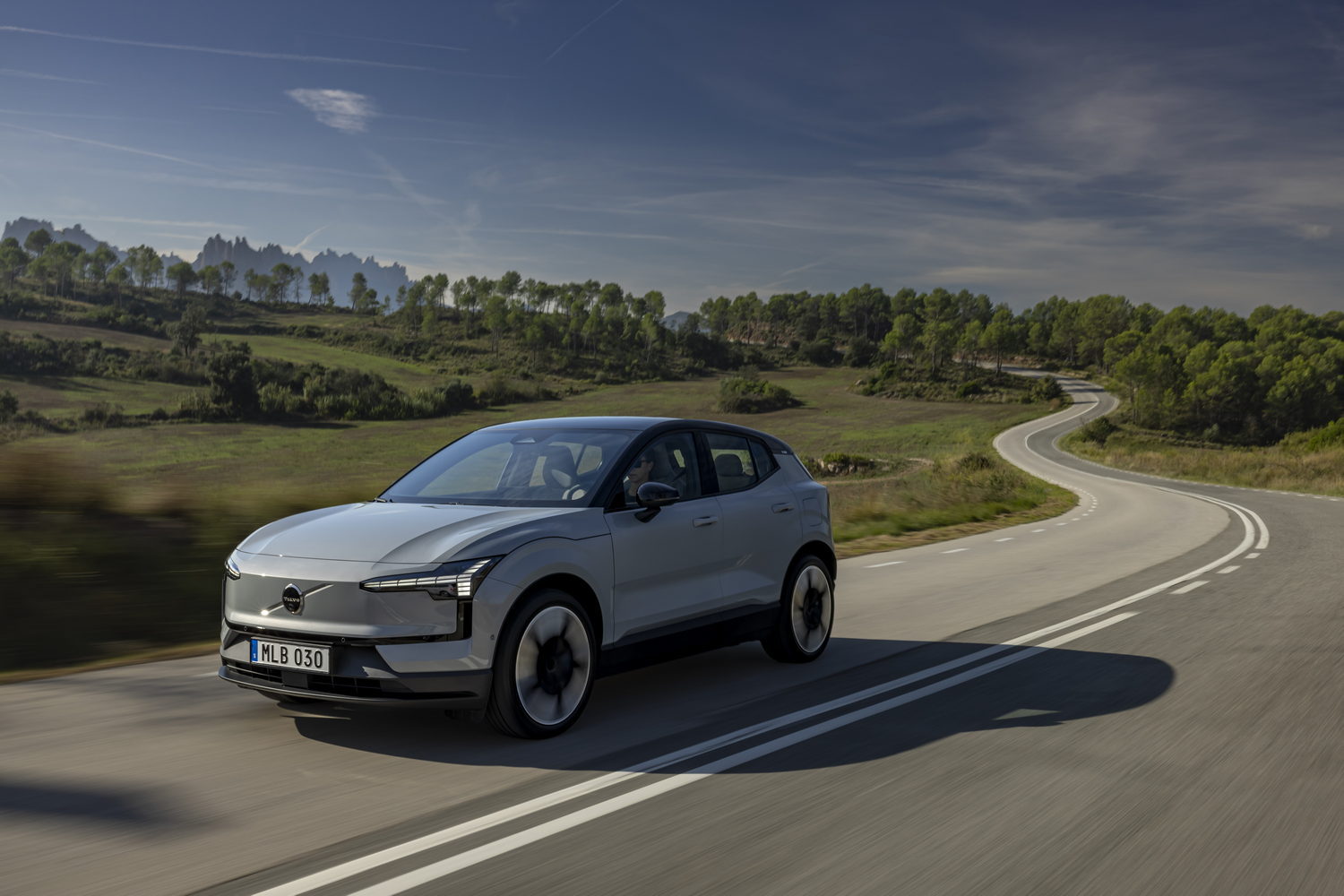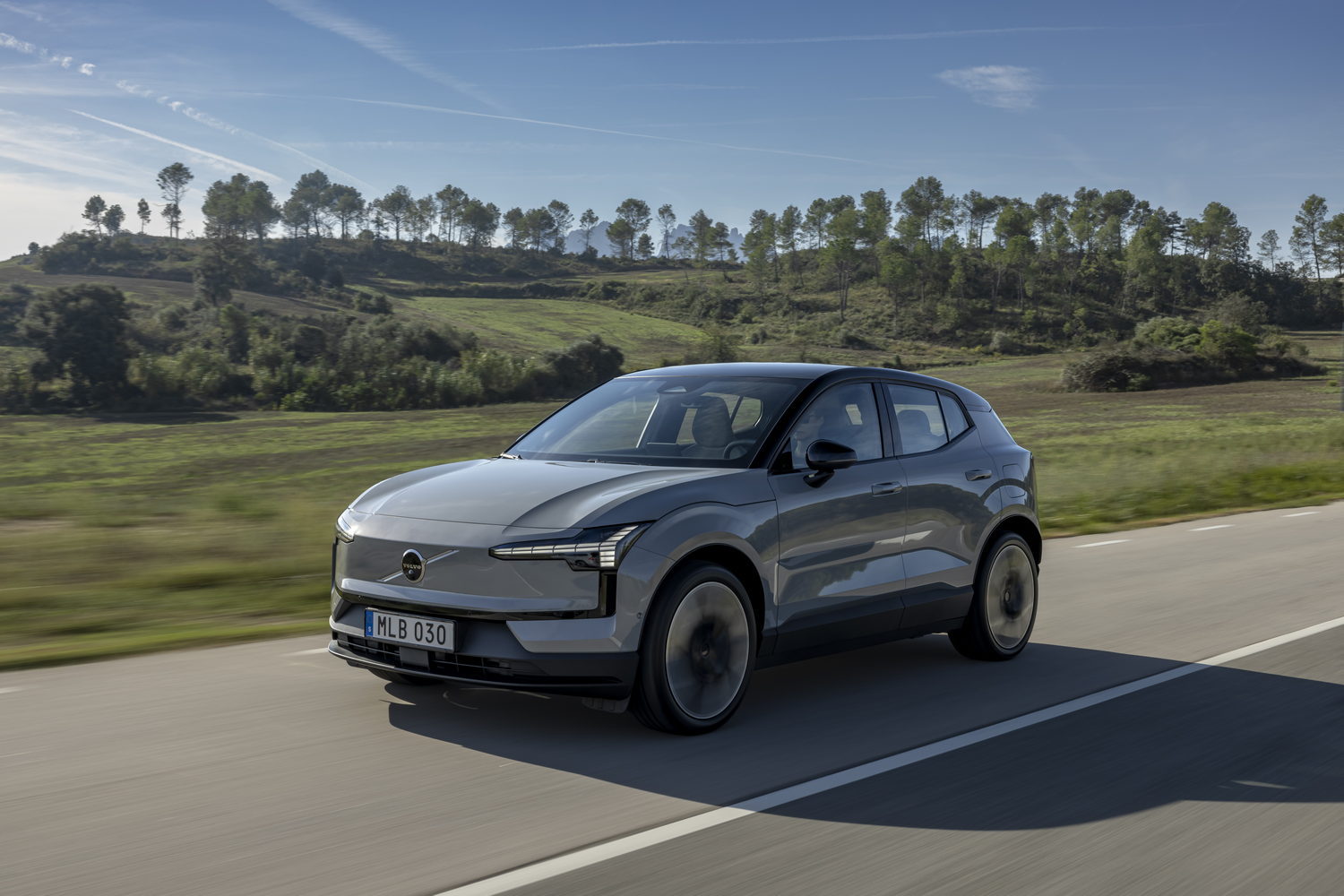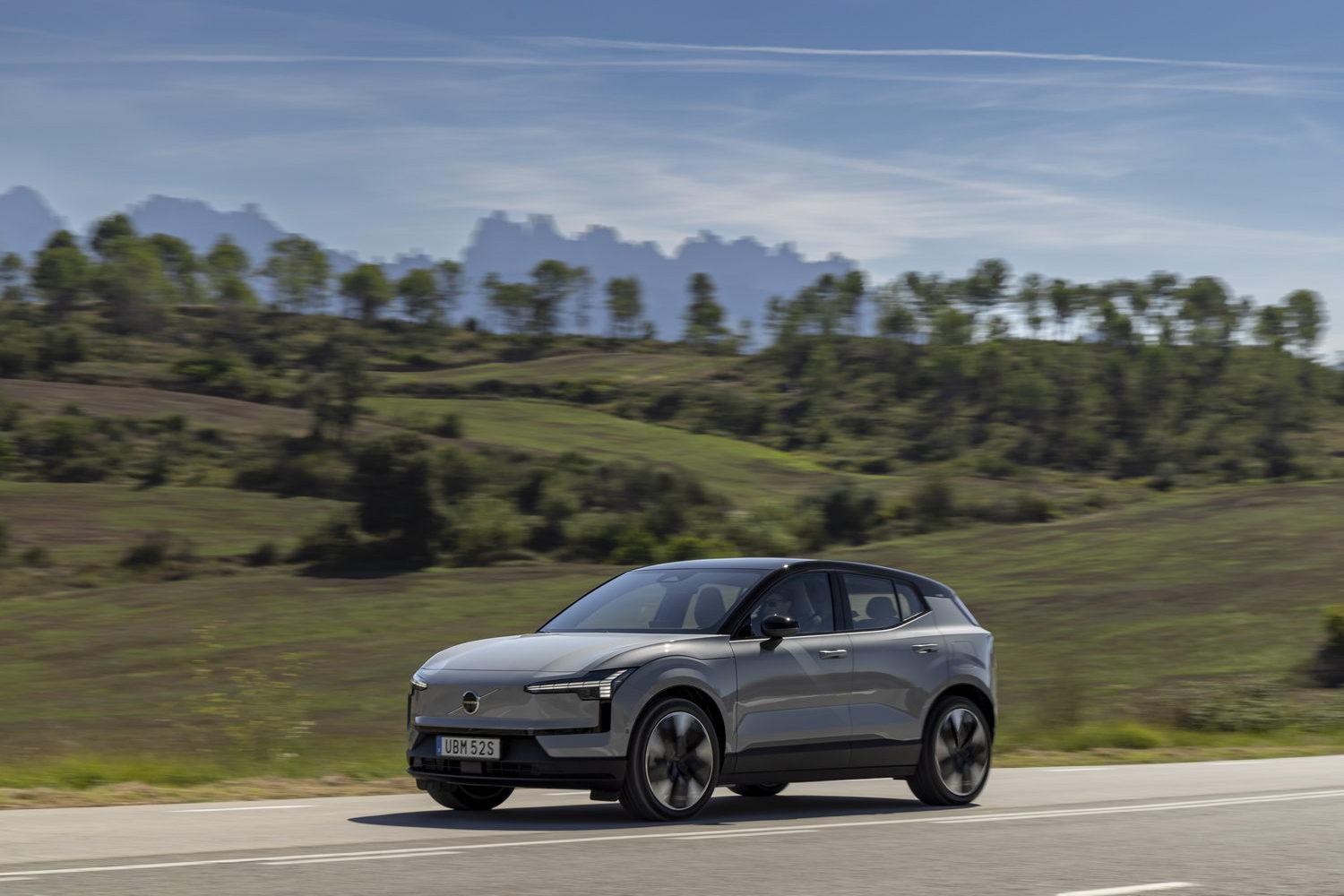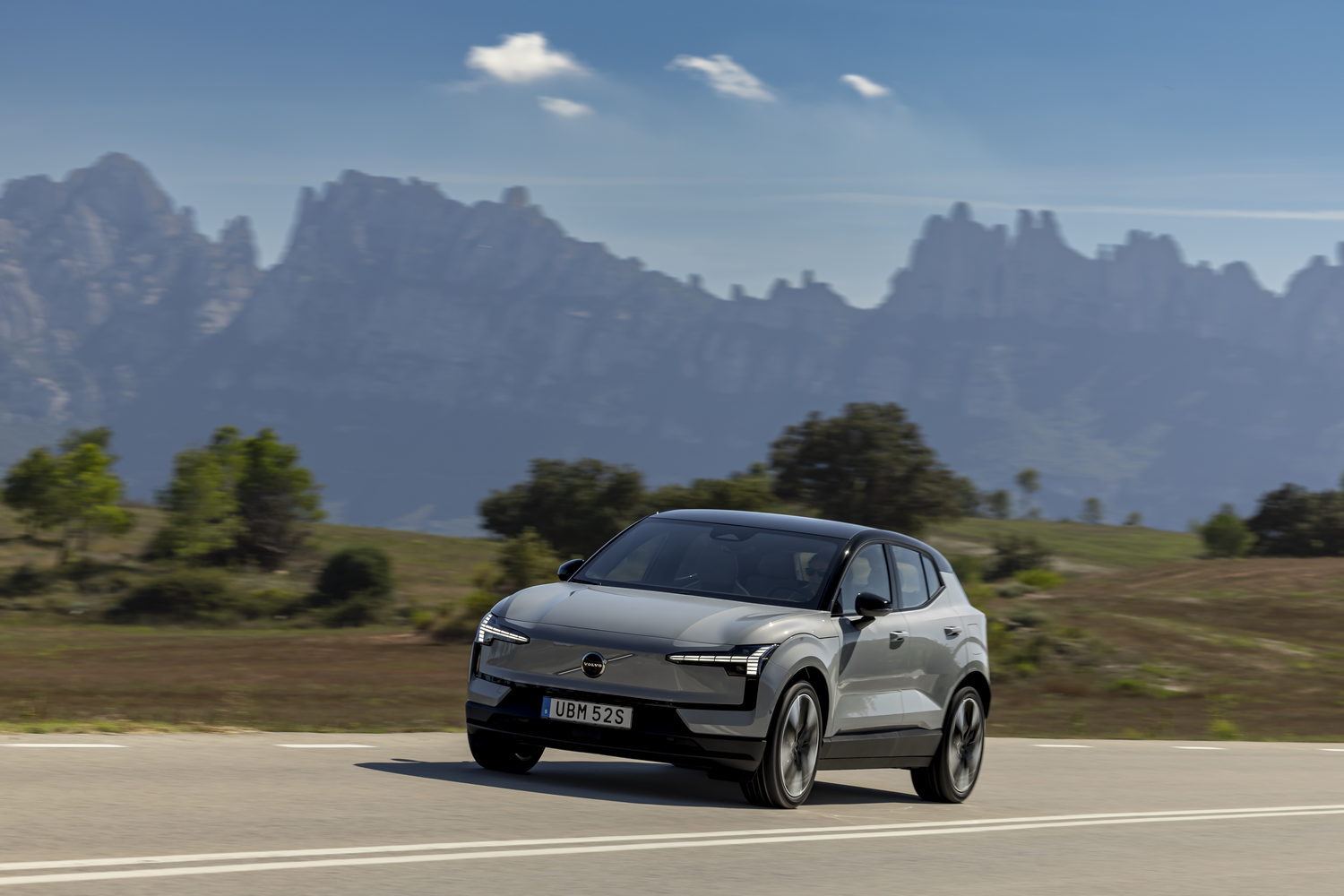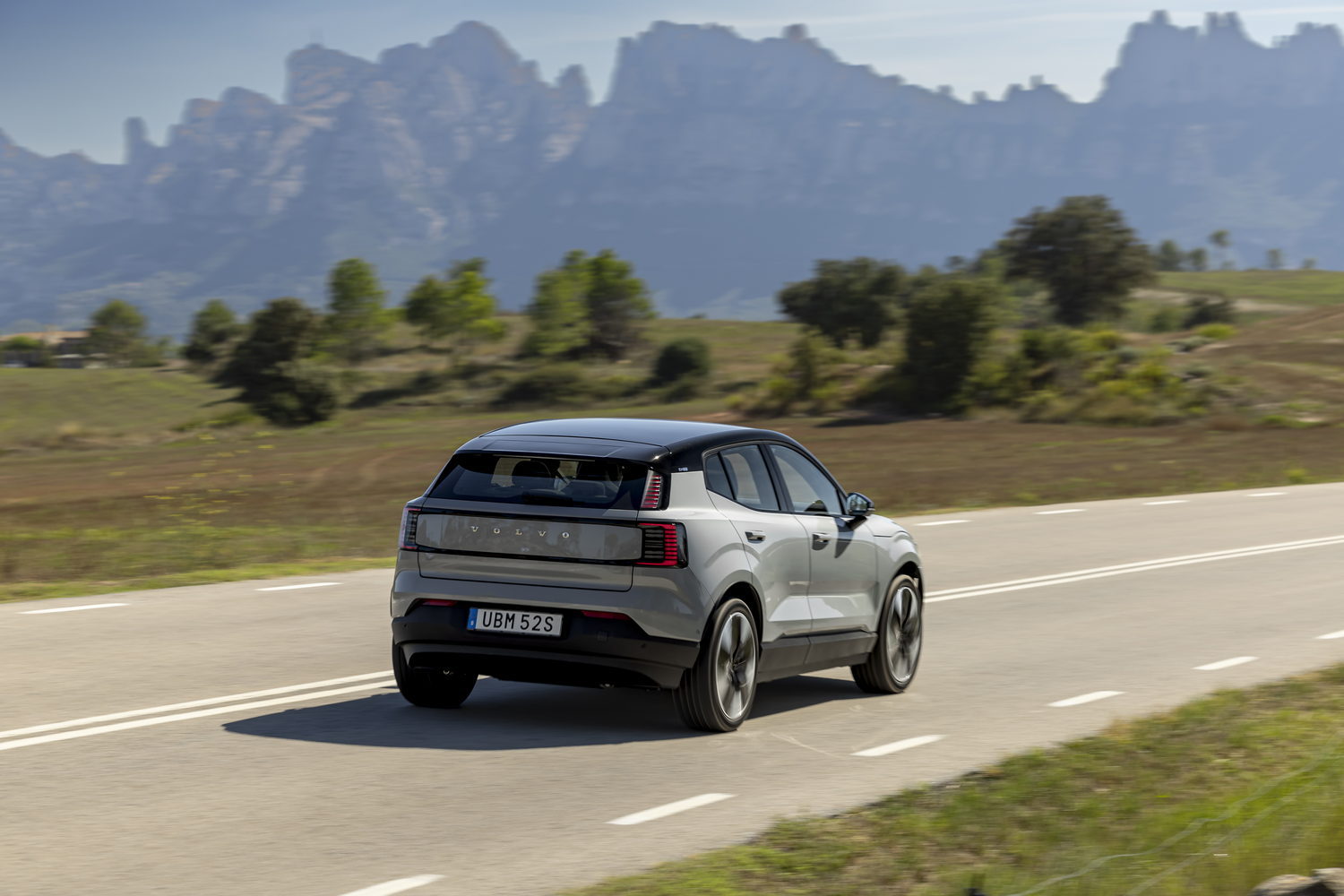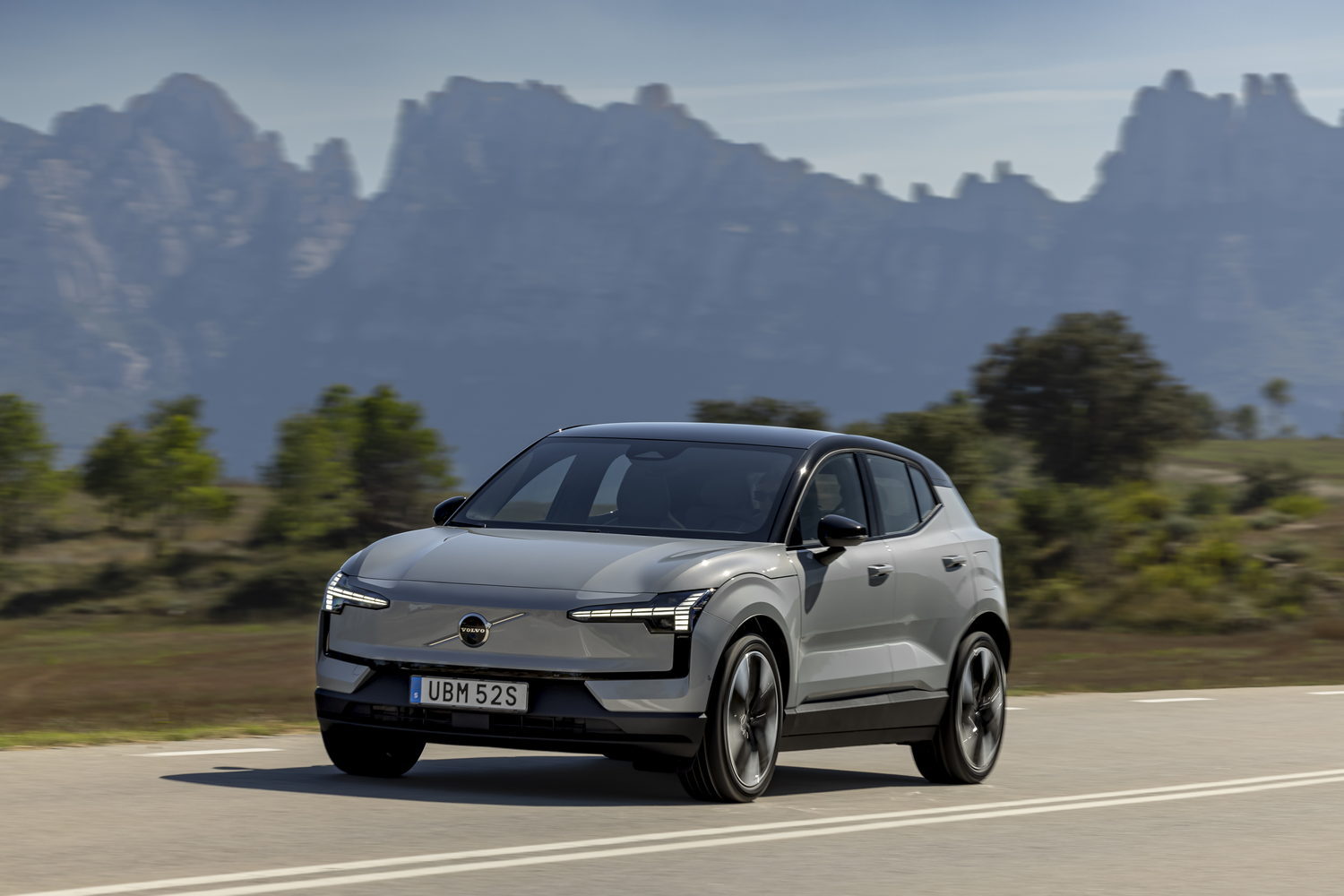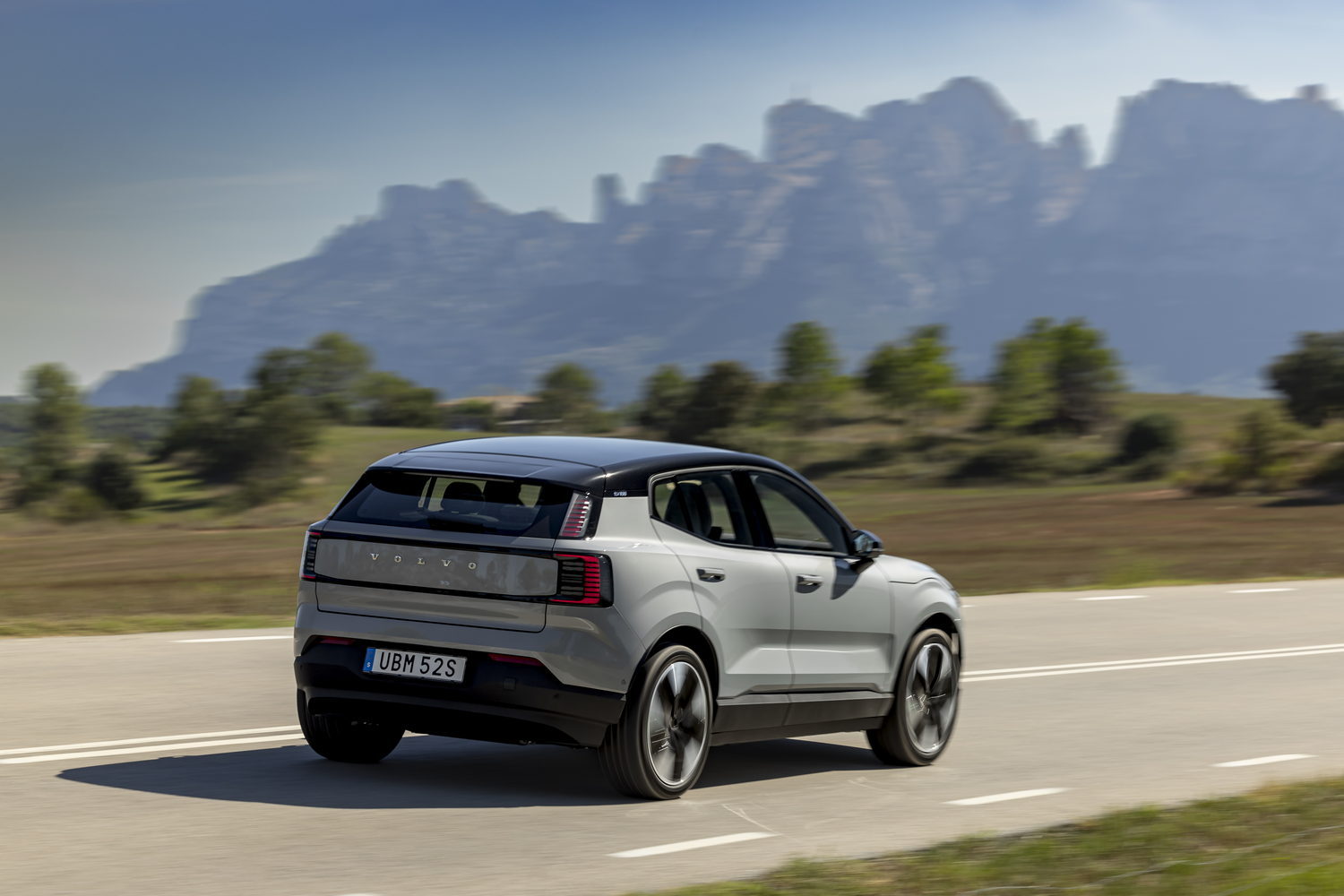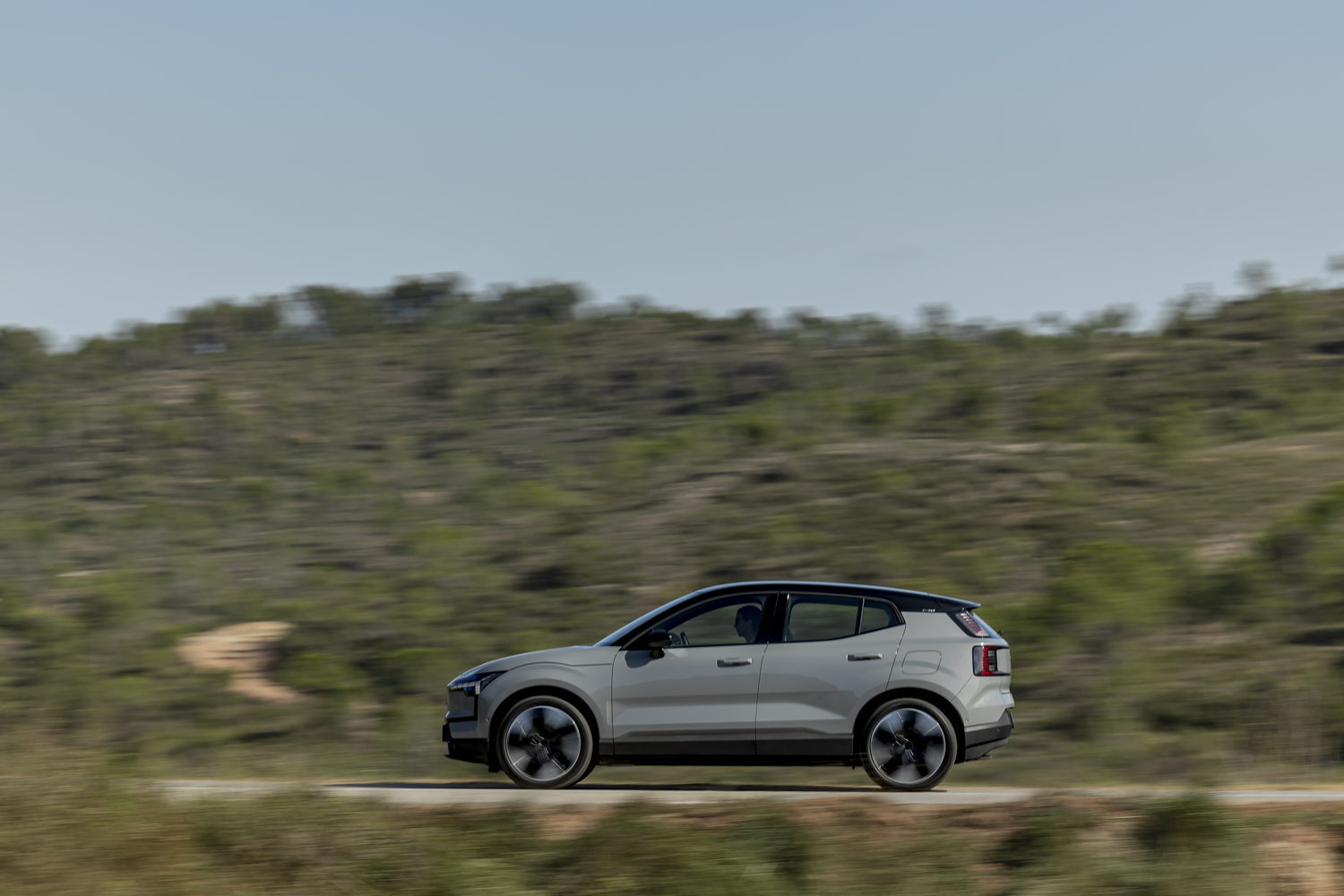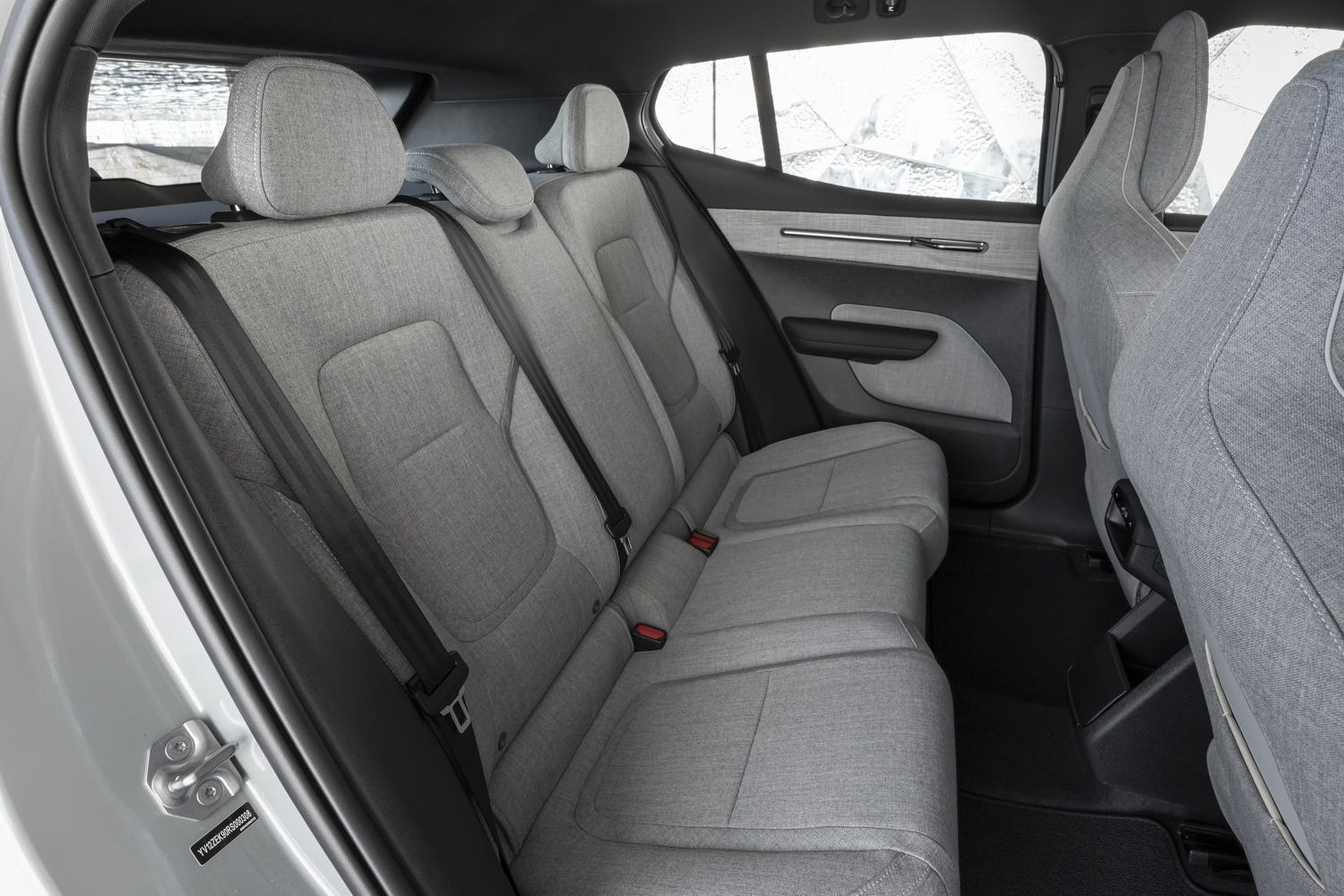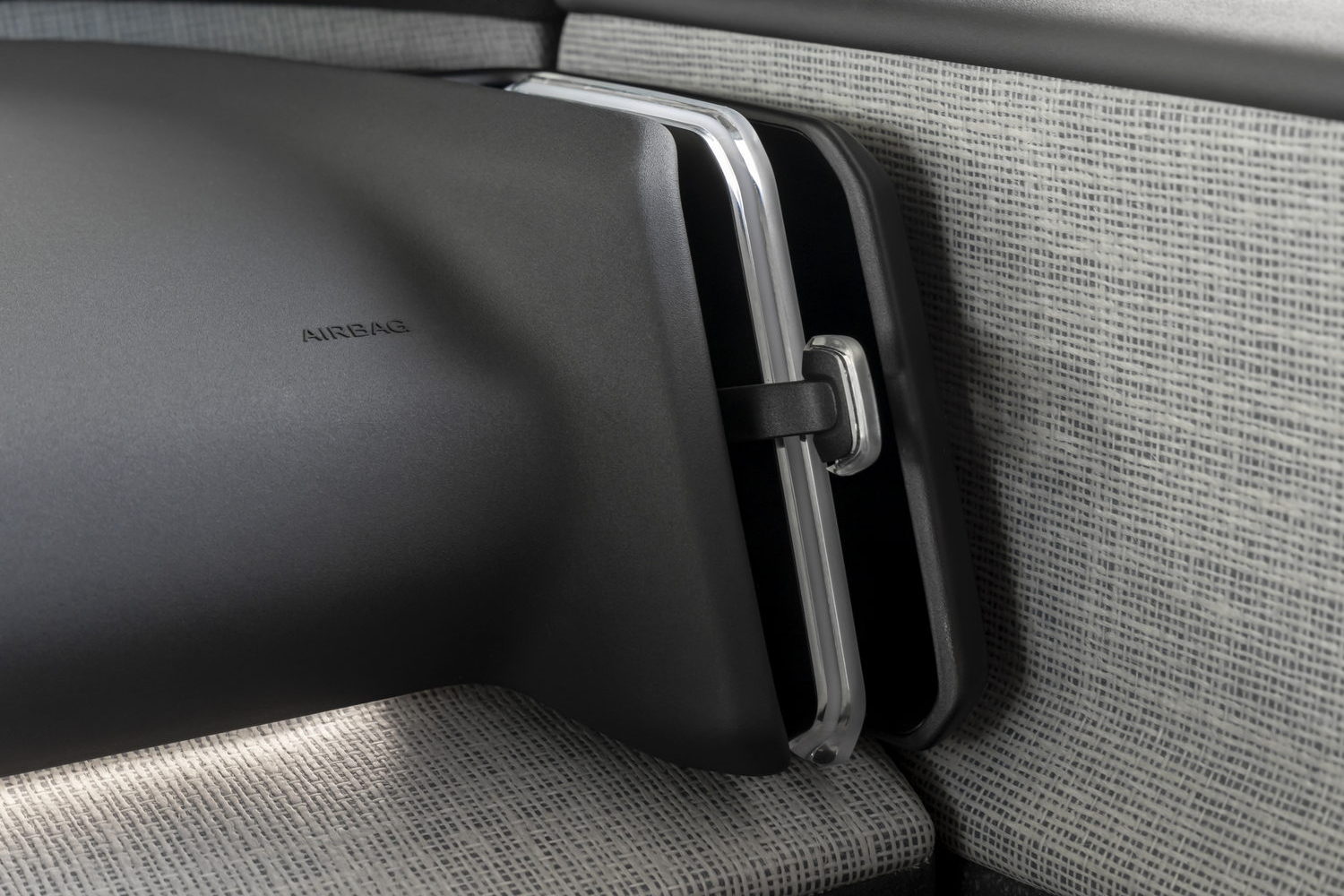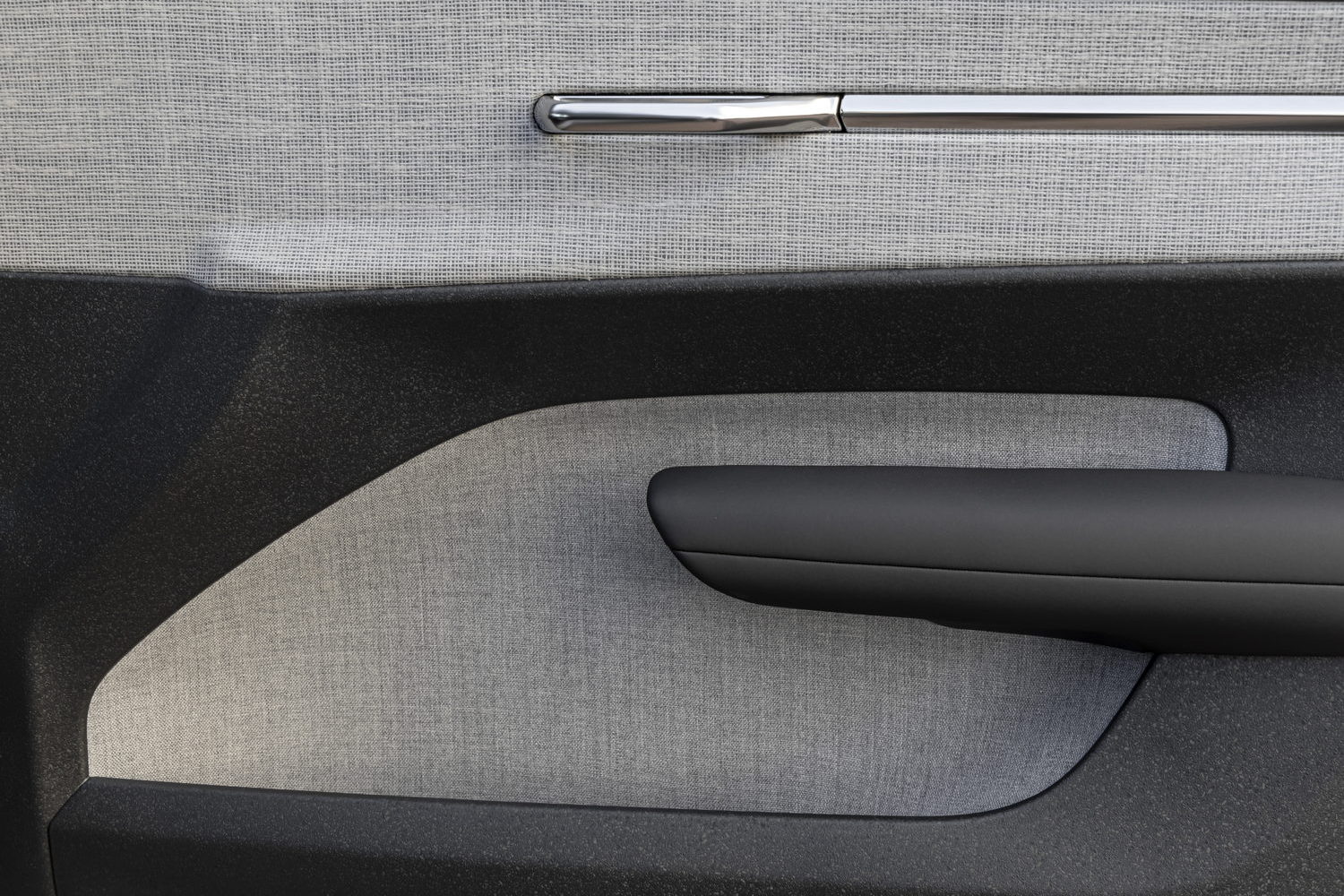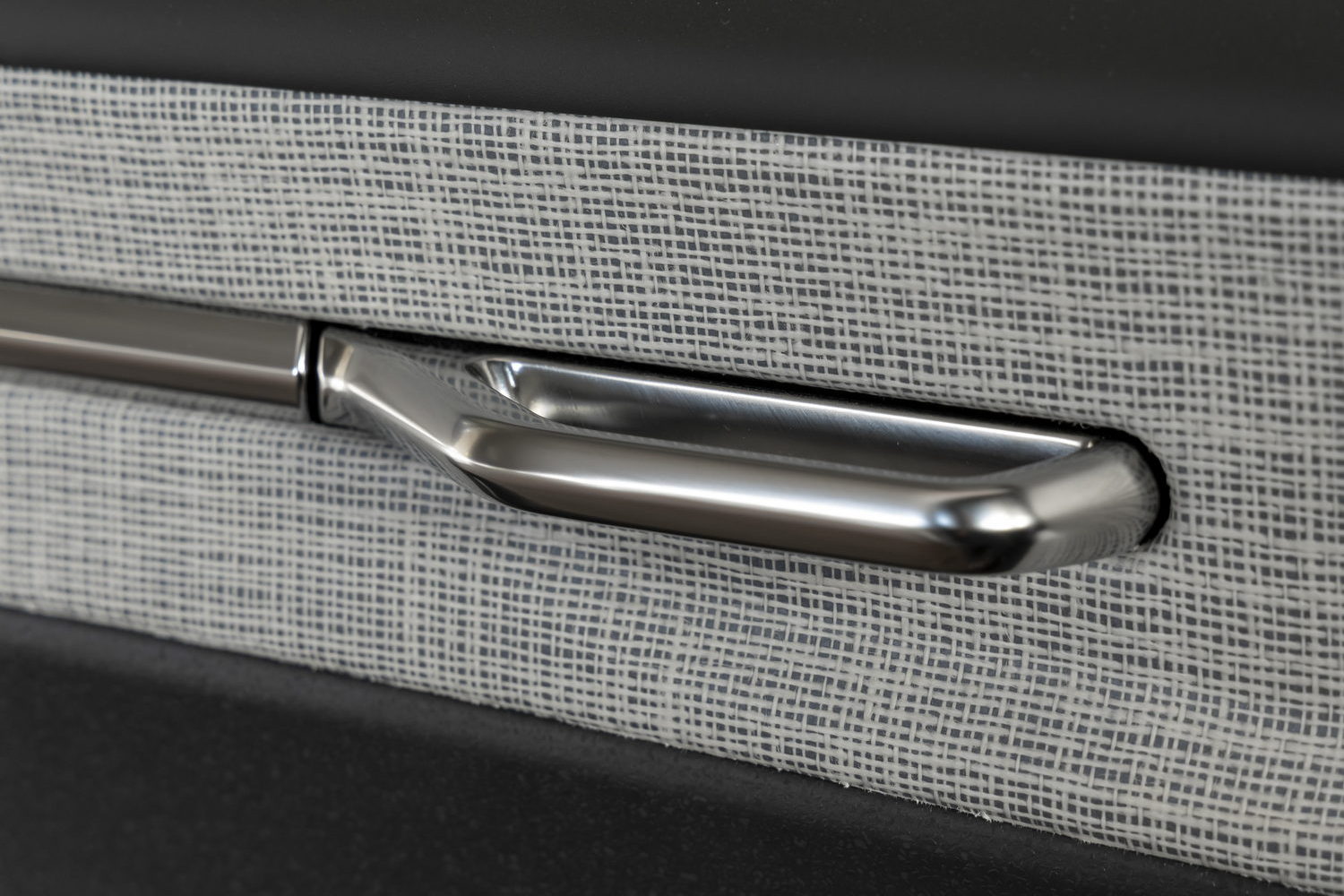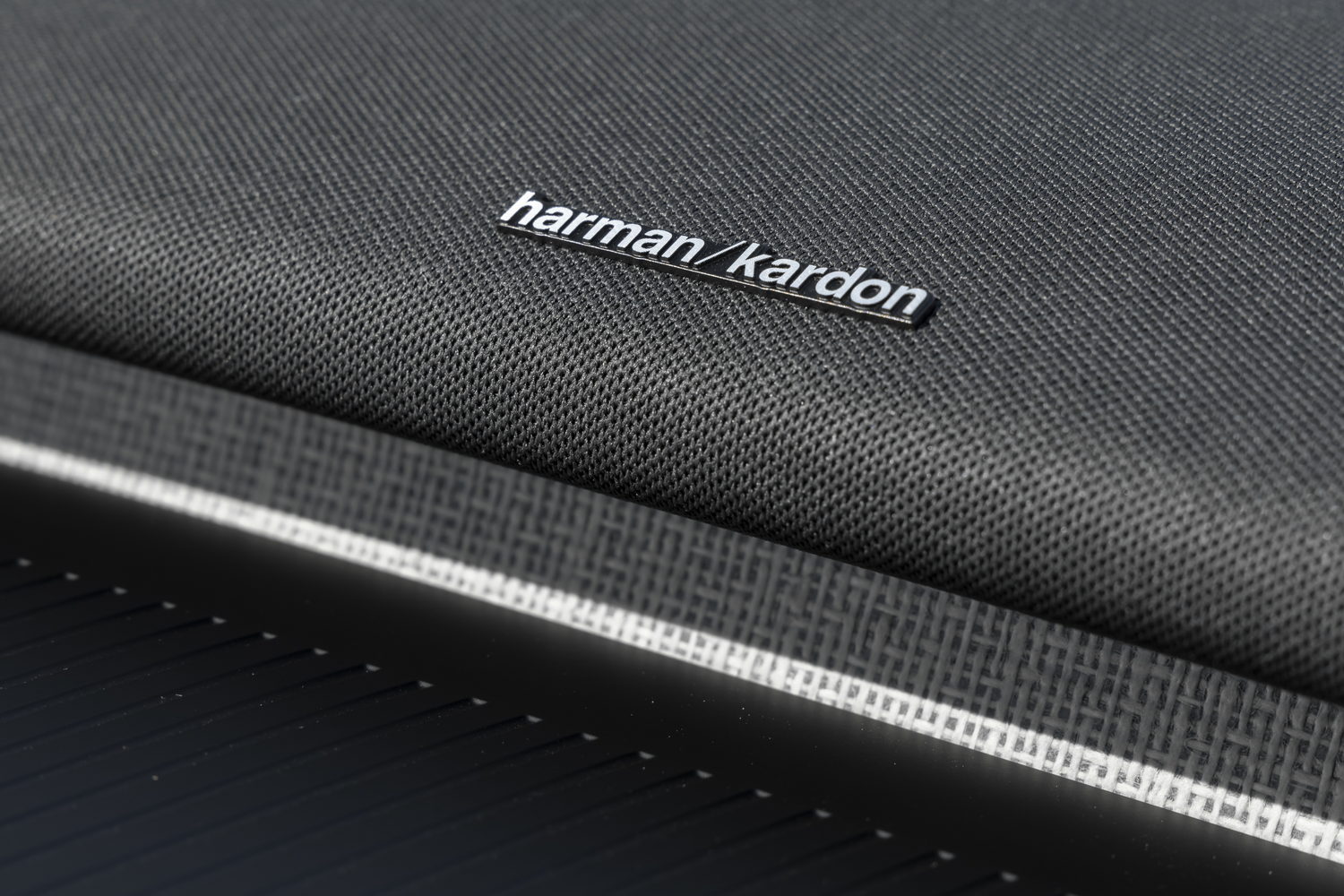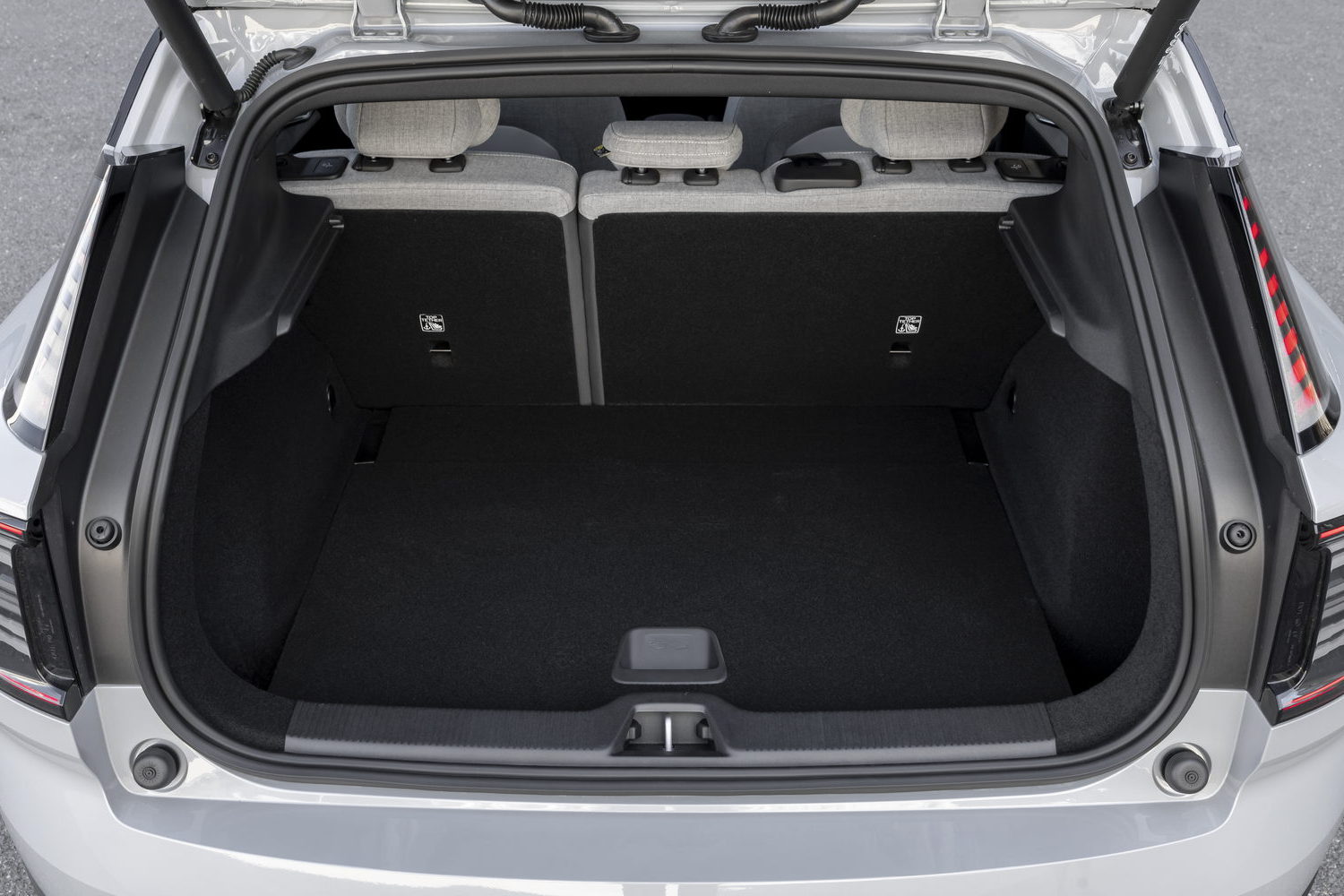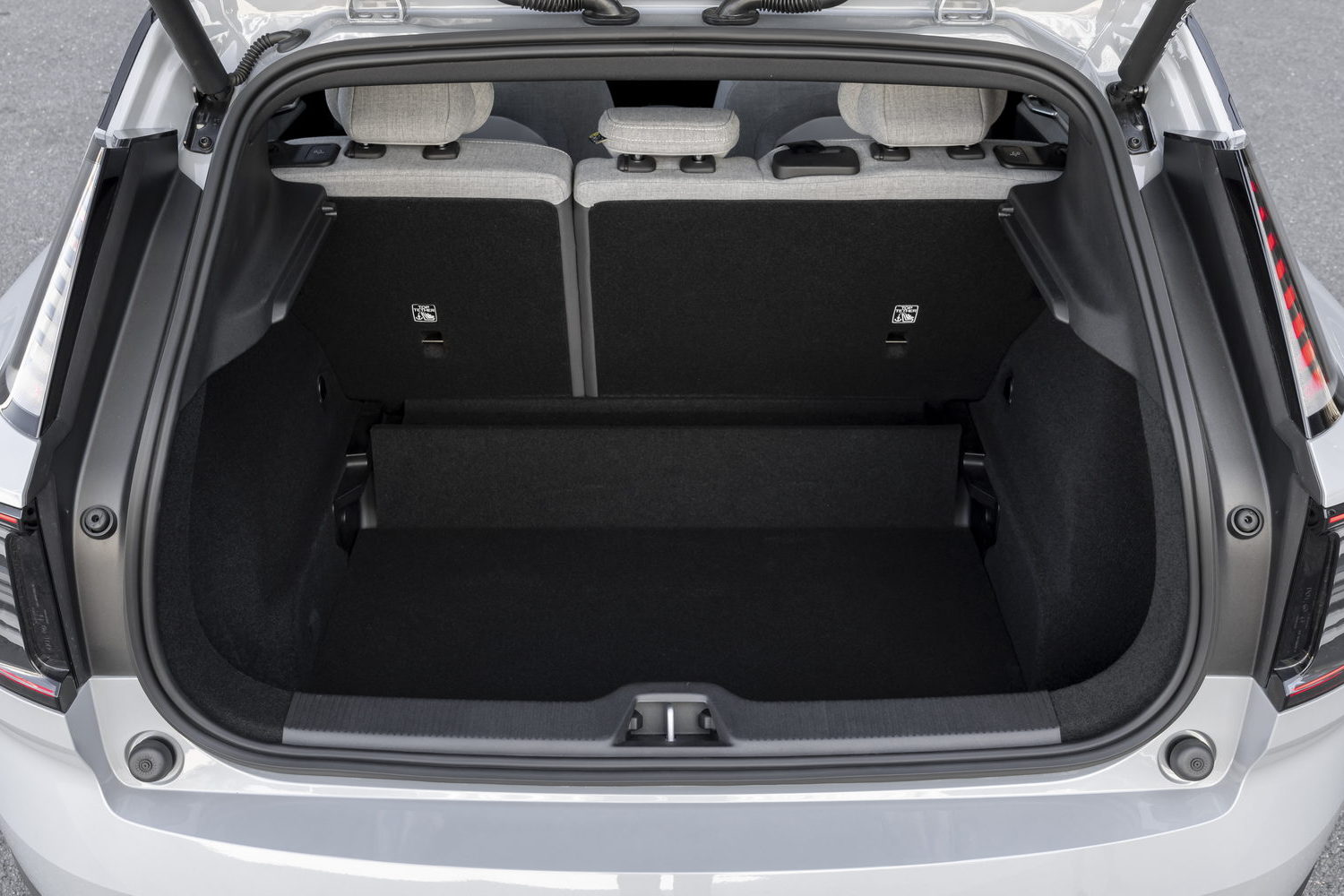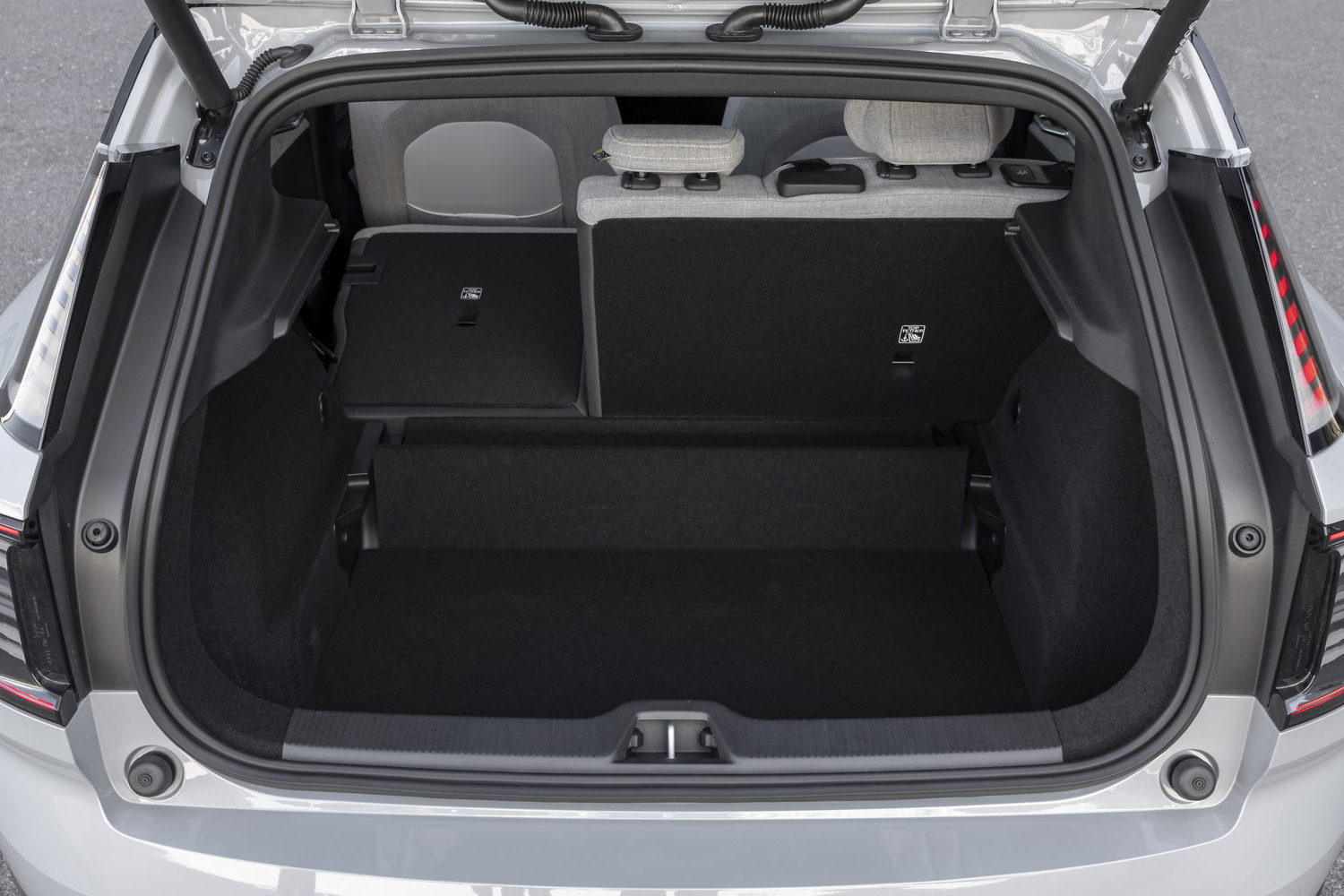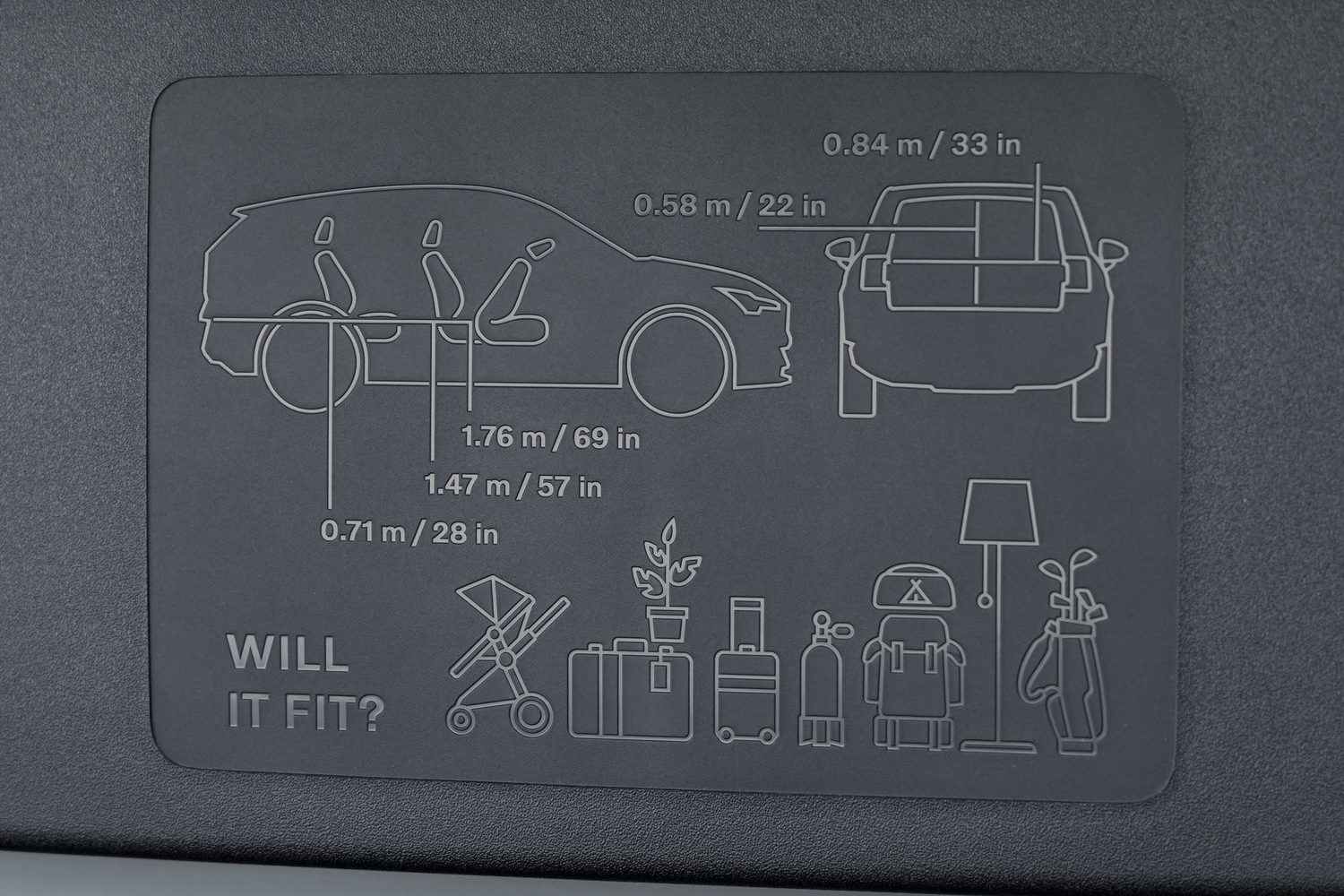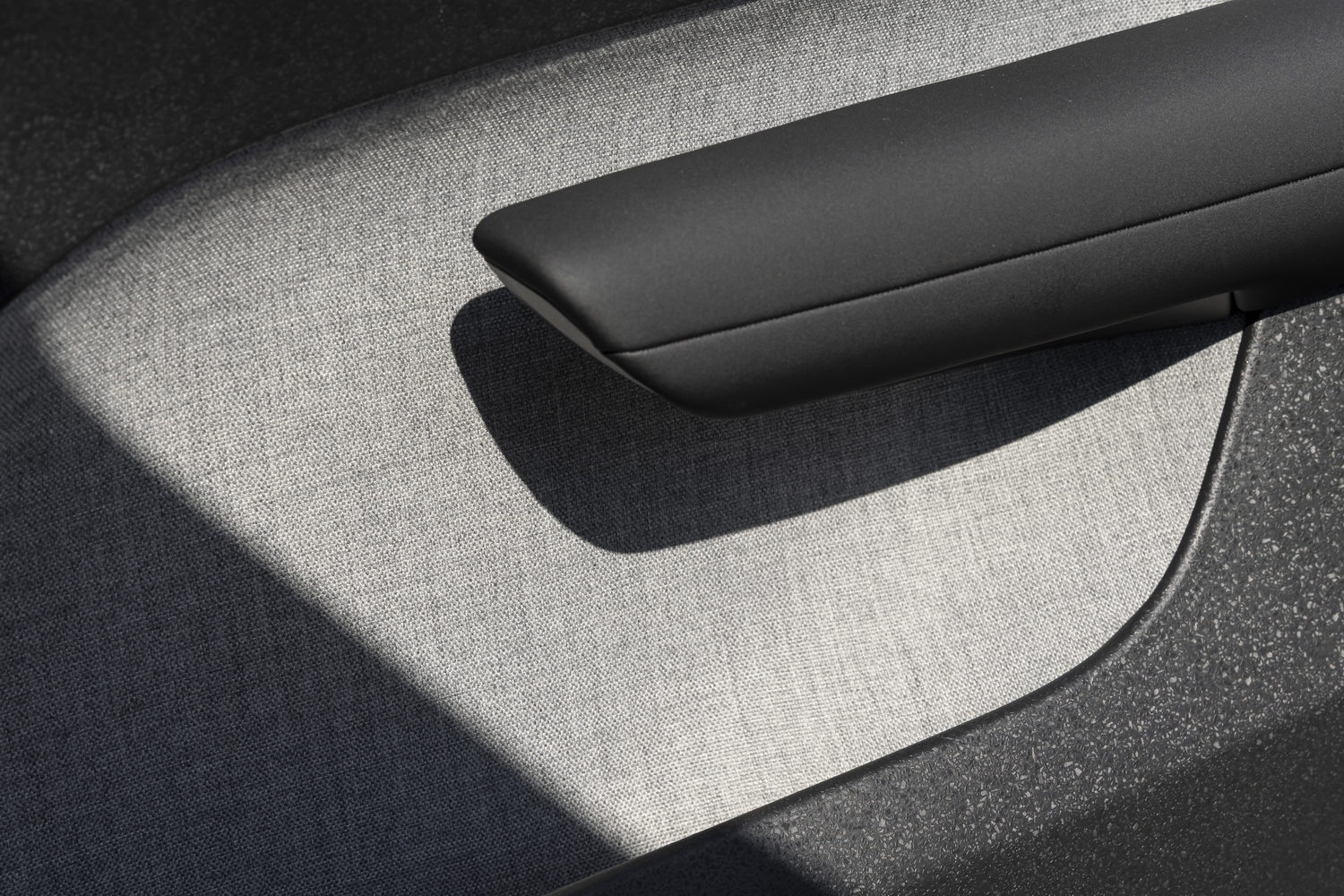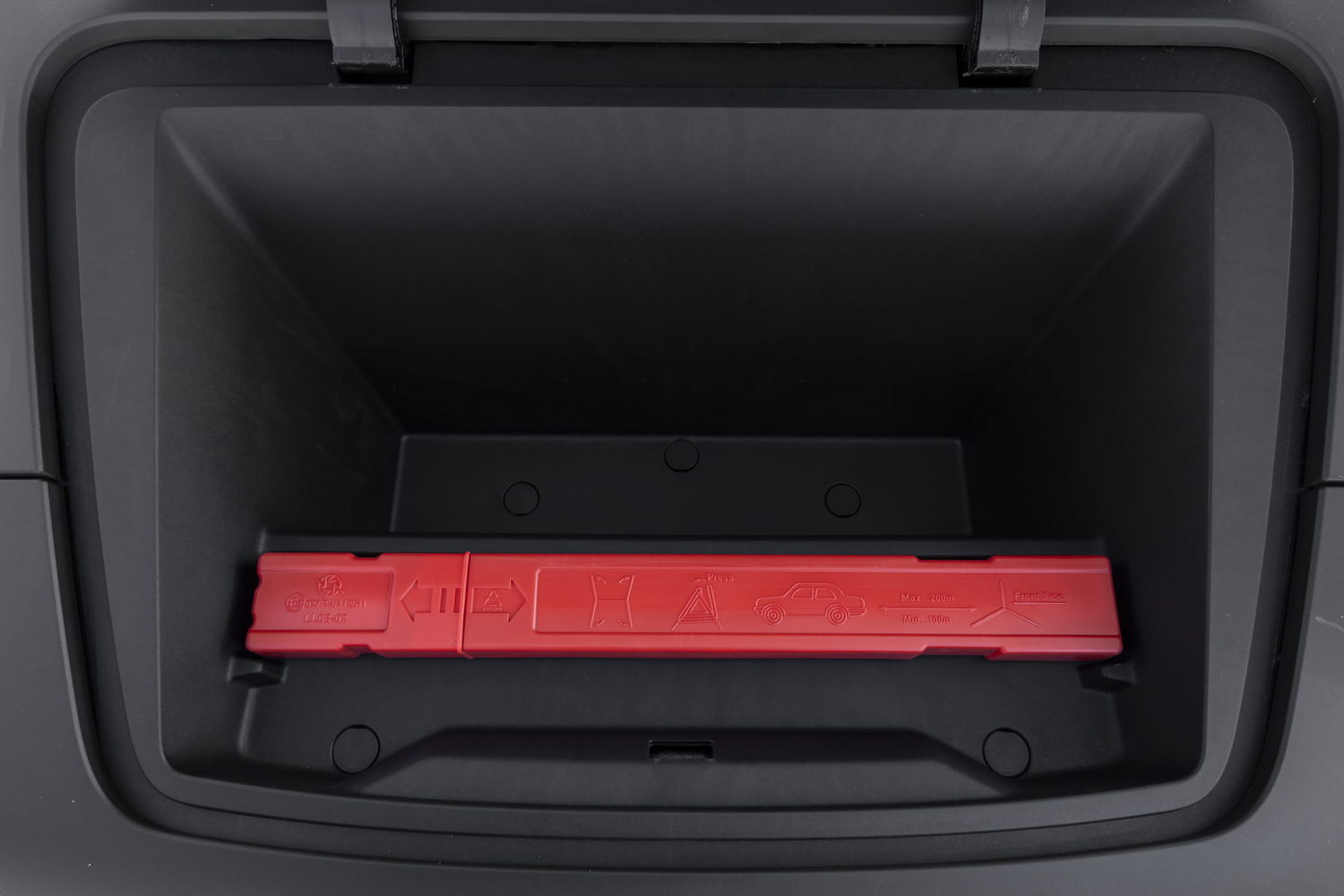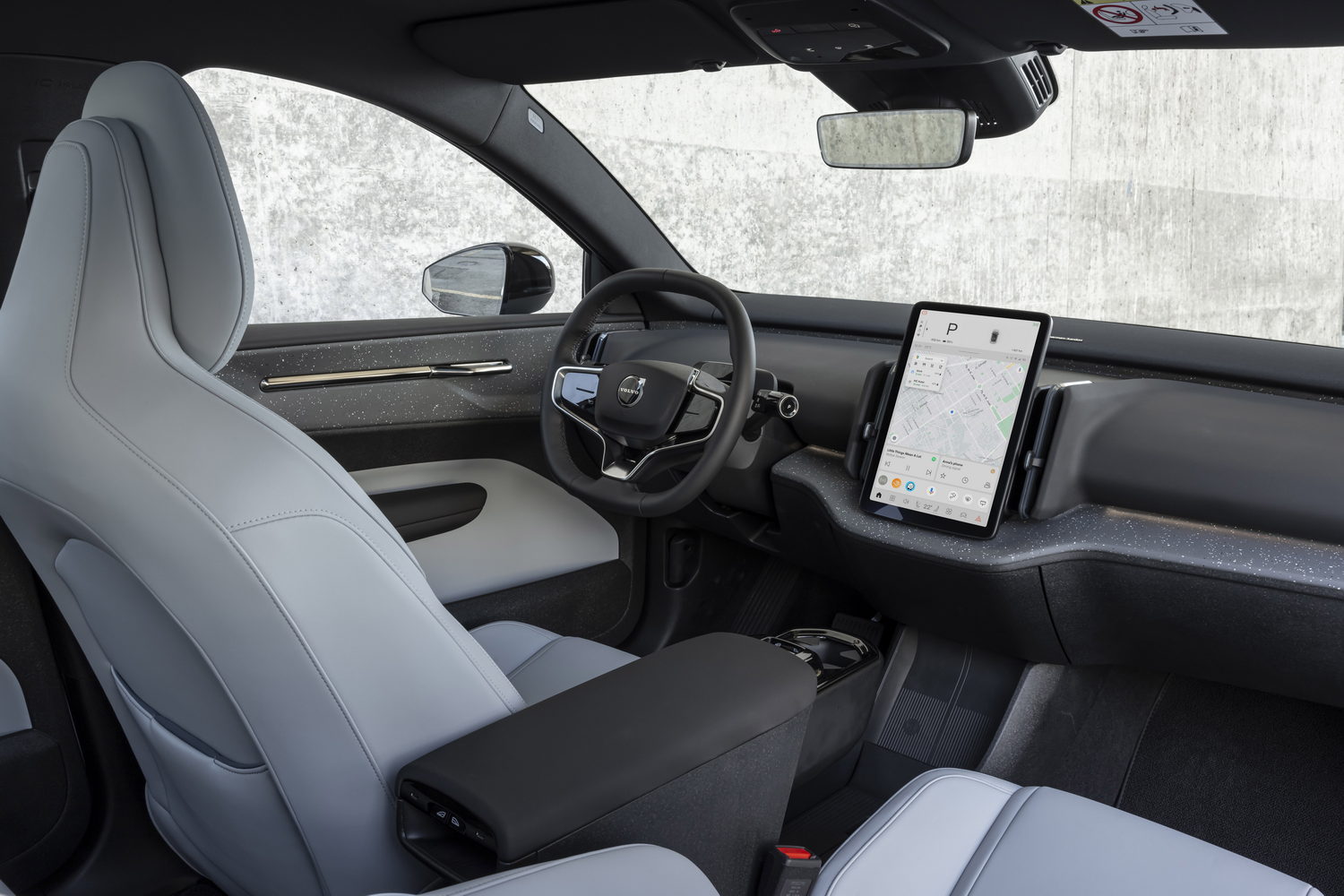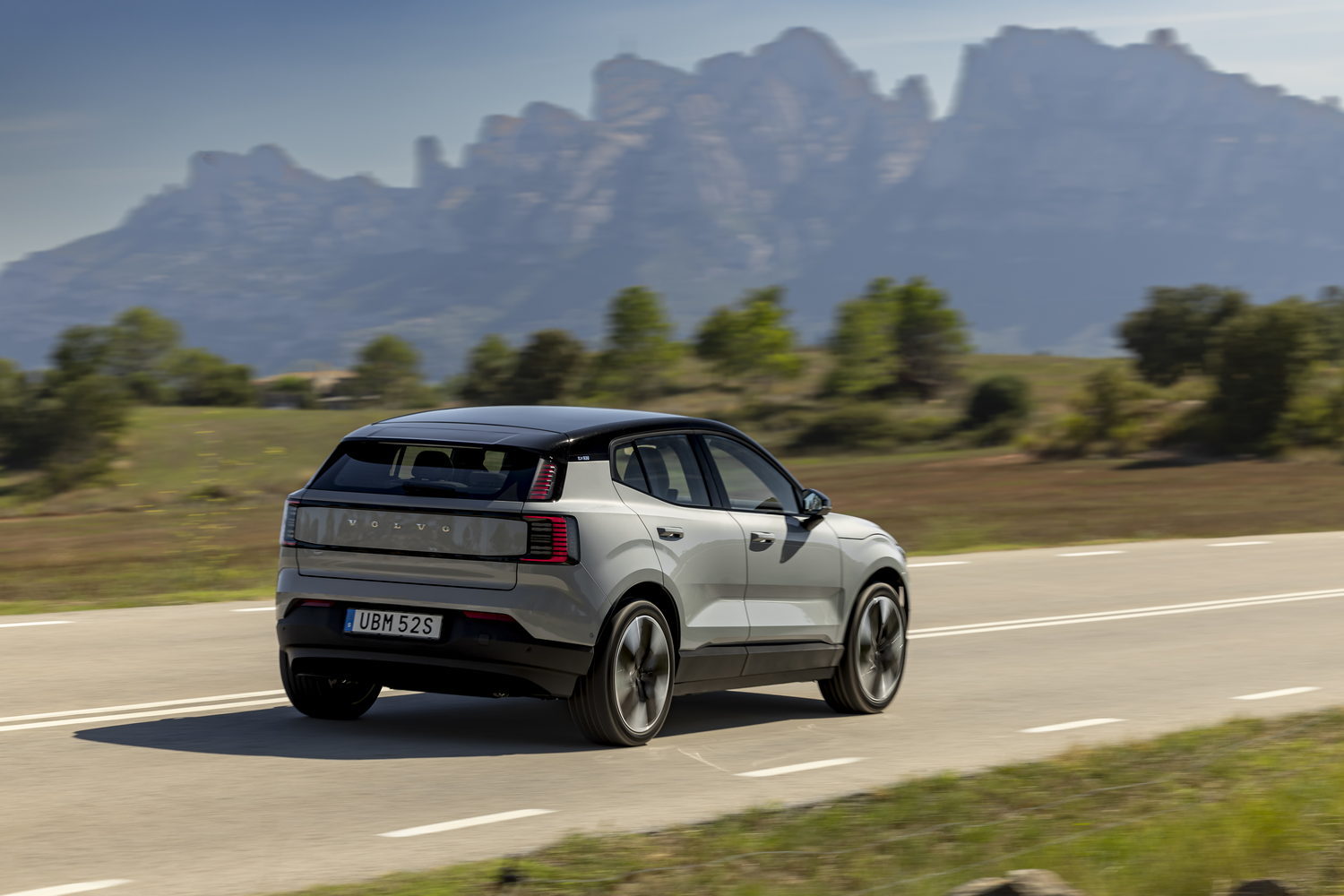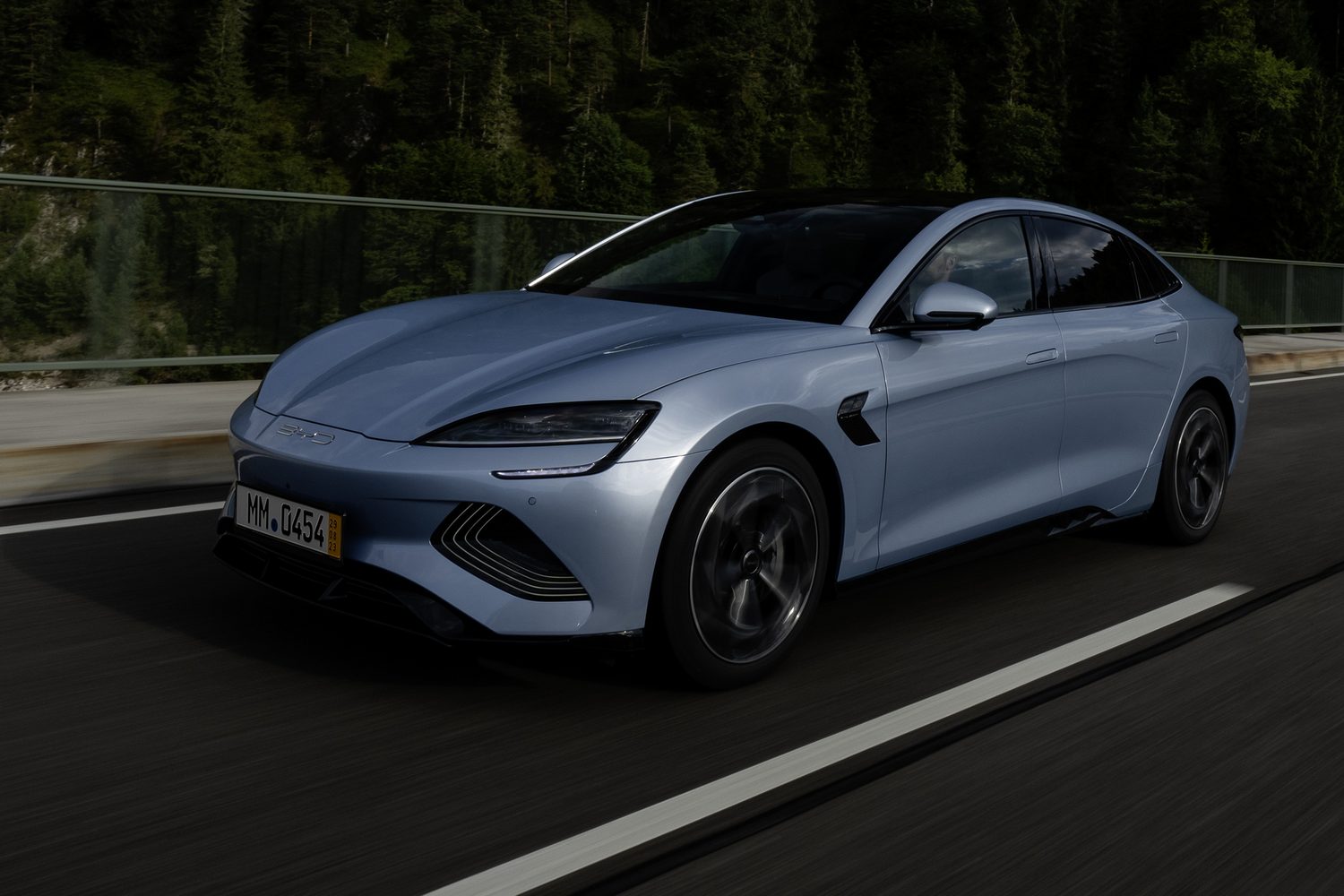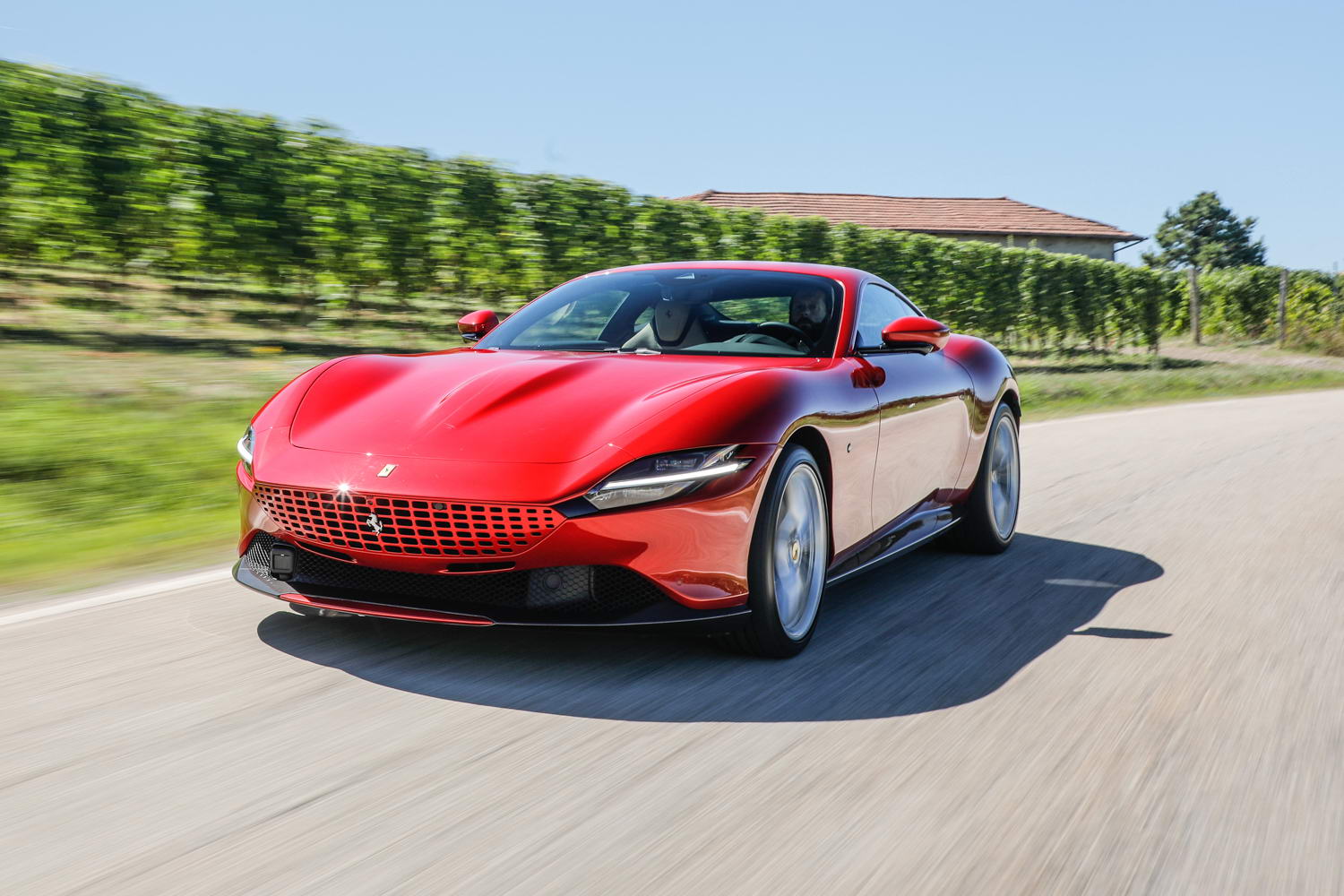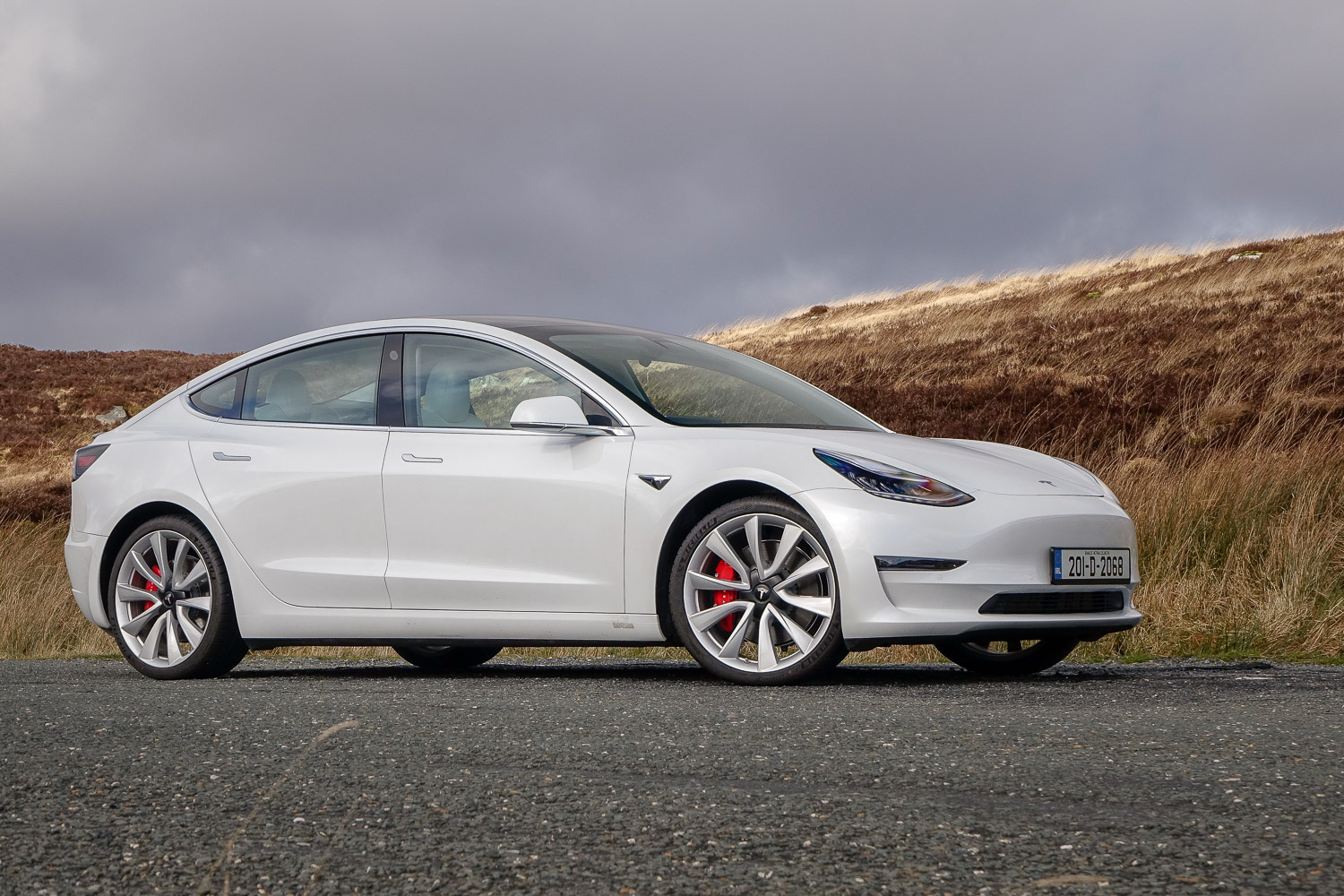A power output of 428hp and a blistering 0-100km/h time mark the Volvo EX30 Twin Motor Performance out, but do such figures make it the complete performance package?
In the metal
The Performance version of the Volvo EX30 looks, from the outside, absolutely identical to the single-motor models. In many ways, that's a big part of its appeal - we used to think a 'Q-car' was a sporty version of a humble family machine, whose racier spoilers and wheels would only be spotted by true motoring nerds. This EX30 Twin Motor Performance takes that idea to a new extreme of subtlety - the only external difference between this and its humbler stablemates is the fitment of 20-inch alloy wheels. Ferrari performance, IKEA car park styling...
That's possibly slightly unfair to the EX30, which has a clean, crisp, and handsome shape attenuated by some jazzy LED lights front and rear, and with a nice two-tone roof paint scheme that comes as standard.
It's even better inside, where the mix of intriguing, recycled materials and soft-touch surfaces creates a harmonious balance between right-on and premium-feel. The front of the cabin is brilliantly laid out with fantastic seats and lots of storage. The main touch points - such as the squared-off steering wheel and the beautiful metal door handles - feel great to touch, but it's a shame that the handsome 12.3-inch touchscreen (the only digital surface in the cabin, which doubles up as both instrument panel and infotainment screen) can be obstructively fiddly to use at times. At least the graphics look expensive, although we have doubts over the deletion of any driver's instrument screen or head-up display.
In the back it's a little less successful, with limited legroom and space really only fit for pre-teens, but the boot is just about big enough for practicality.
Driving it
The EX30 Twin Motor Performance keeps the standard rear-drive models' 272hp, 343Nm electric motor driving the rear wheels. It adds a 156hp, 200Nm motor to the front axle - basically like adding an entire Jeep Avenger to the power output - for a combined 428hp and 543Nm of torque. In a car weighing 1,800kg, that's quite a lot.
The upshot of all that grunt, and let's not forget that electric motors deliver all their torque the instant you ask for it, is staggering acceleration. While the EX30 Performance doesn't quite pin you to the back of your seat with the vehemence that a Tesla Model Y Performance can manage, it's nonetheless bonkers fast for a car that's aimed at the compact family crossover market. While, like all Volvos, the top speed is limited to 180km/h, this Performance model can hit 100km/h from standstill in just 3.6 seconds. That's blistering stuff, not far off what the best Ferraris can manage, and it requires no skill on your part - just find a straight stretch and hit the gas pedal hard.
Which raises some questions. Should a supposed family car really have such potent performance? Is your average EX30 buyer quite ready for acceleration that can make you feel genuinely queasy as your stomach tries to wrap itself around your coccyx? Does anyone really need a compact crossover that can headbutt a Ferrari 458 Italia in quite such an emphatic sense?
The answers to those questions are likely: why not? Probably not. And almost certainly not.
On the upside, the EX30's brakes - which deftly juggle the demands of regenerative and mechanical braking - seem able to rein in the power on offer. On the downside, aside from those 20-inch rims, the EX30 Performance doesn't offer any dynamic improvement over the standard models, so there's no extra level of driver interaction nor control; just corners that come at you an awful lot faster.
Oh, and those 20-inch rims ruin the ride at urban speeds.
Sadly, the EX30 Performance feels like a rather superfluous model. The standard 272hp rear-drive version is quick enough (0-100km/h in 5.3 seconds is strong hot-hatch territory) so who really needs to knock off the other 1.7 seconds? Equally, while Volvo says that the range is only trimmed by 20km compared to the Extended Range rear-drive model, our test indicated that the battery is going to cry enough after well short of 400km with average consumption of 25kWh/100km.
What you get for your money
Here's where the EX30 Performance makes a case for itself if you're of a mind to make a certain argument. Because the entry-level Performance model costs €48,883 it's something of a performance car bargain. Porsche-bothering acceleration for the same price as a long-range Volkswagen ID.3, essentially. Our higher-spec Ultra model does banjax that equation slightly, costing a stiffer €53,495, but again this is performance that you'd have had to pay multiples of that number to get before.
Extra equipment over the standard model includes 360-degree parking cameras, extended electronic driving aids, 20-inch wheels, dark-tinted windows, a panoramic glass roof, a mixture of synthetic leather and wool trim for the seats which are also power-adjusted, and 22kW AC charging.
Summary
Really, the Volvo EX30 Twin Motor Performance is the answer to a question no-one was asking. The standard version is more than quick enough for most needs, and this one feels more like a spec-sheet special - the on-paper figures are impressive, but the rounded dynamics you expect from a proper high-performance model simply aren't there. Stick with the excellent single-motor versions instead.


